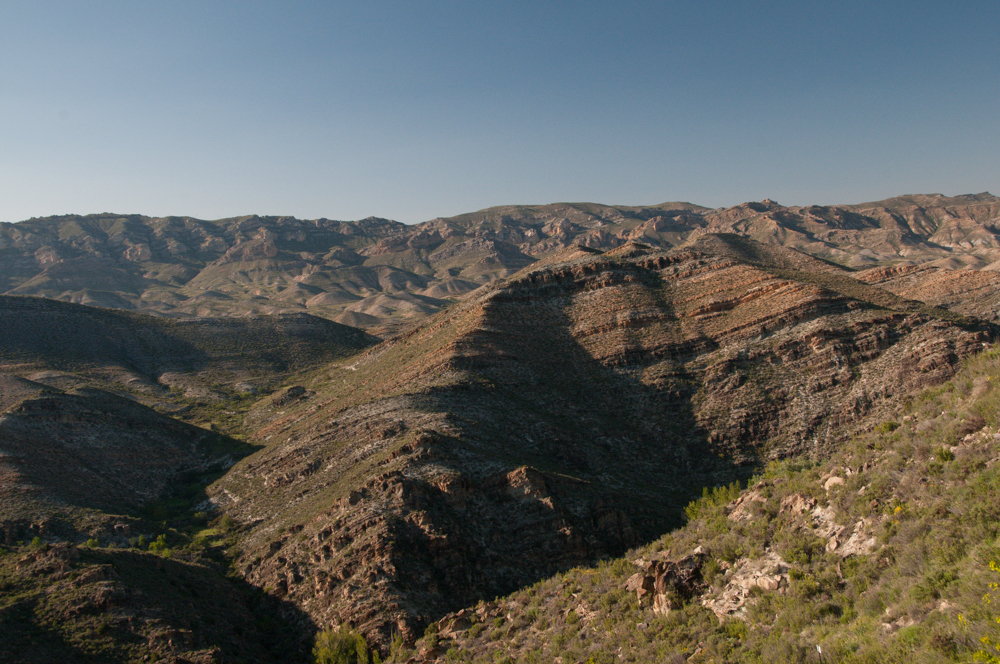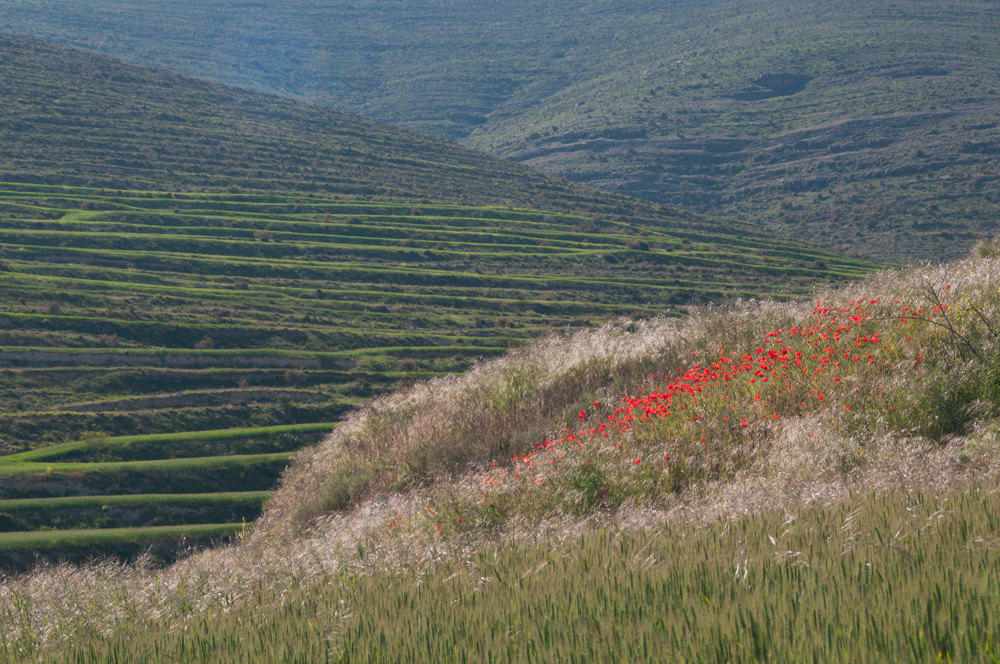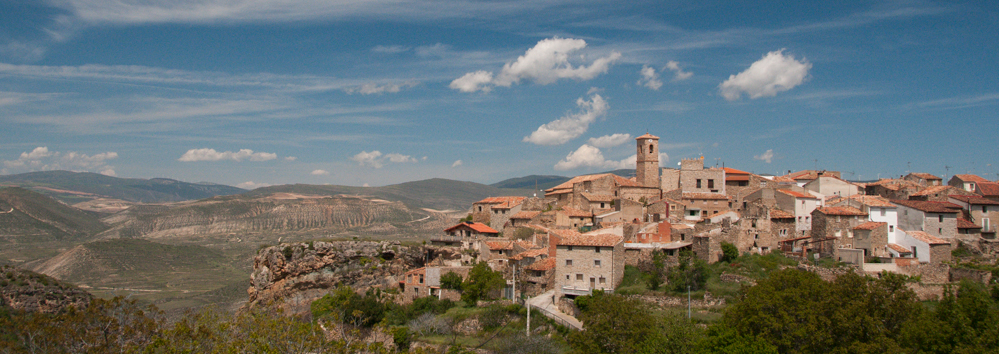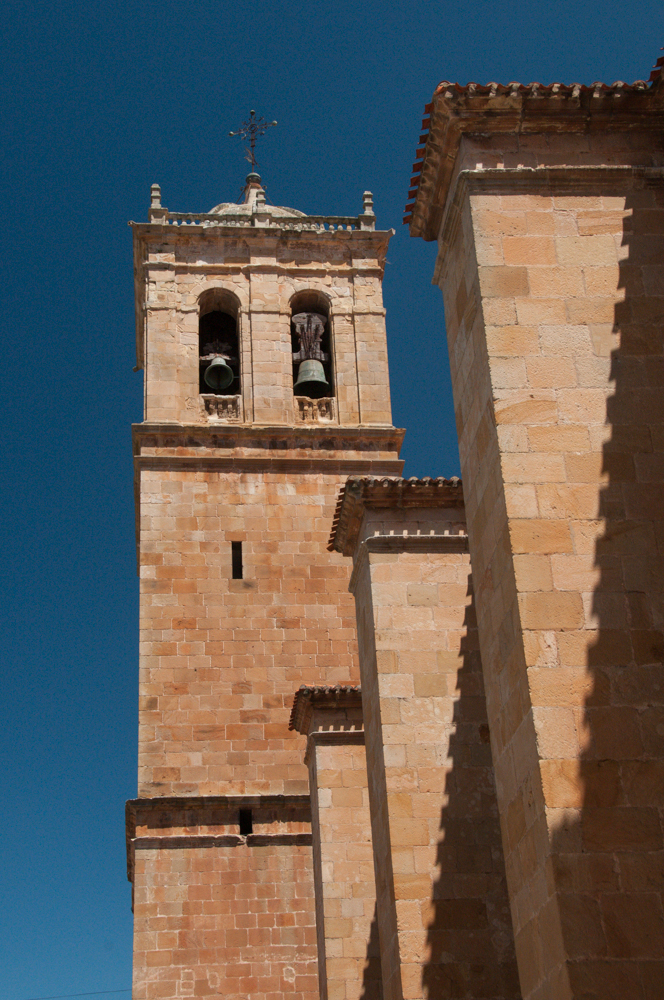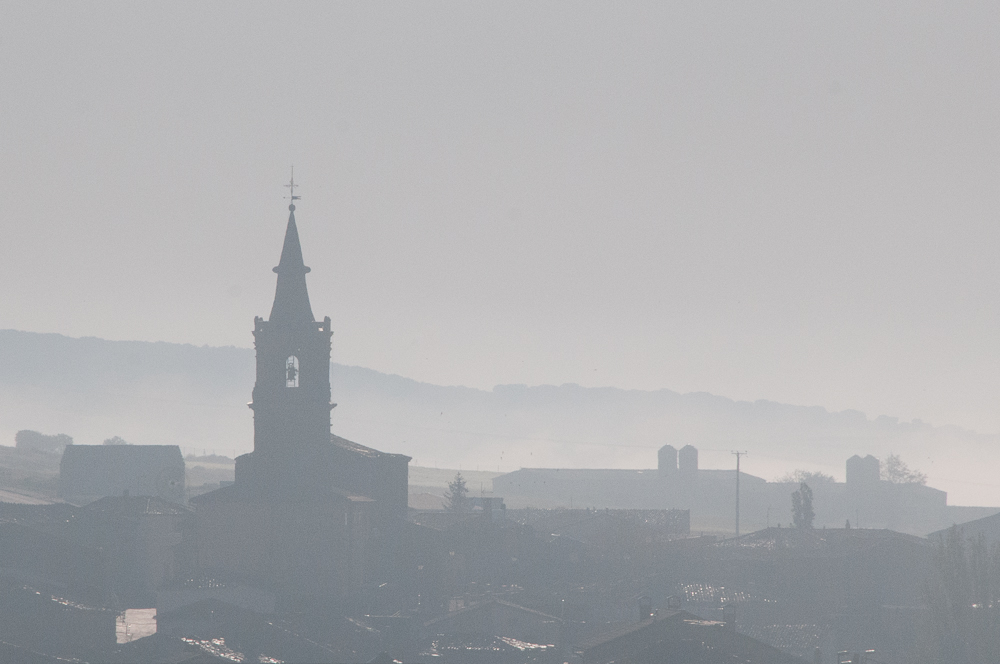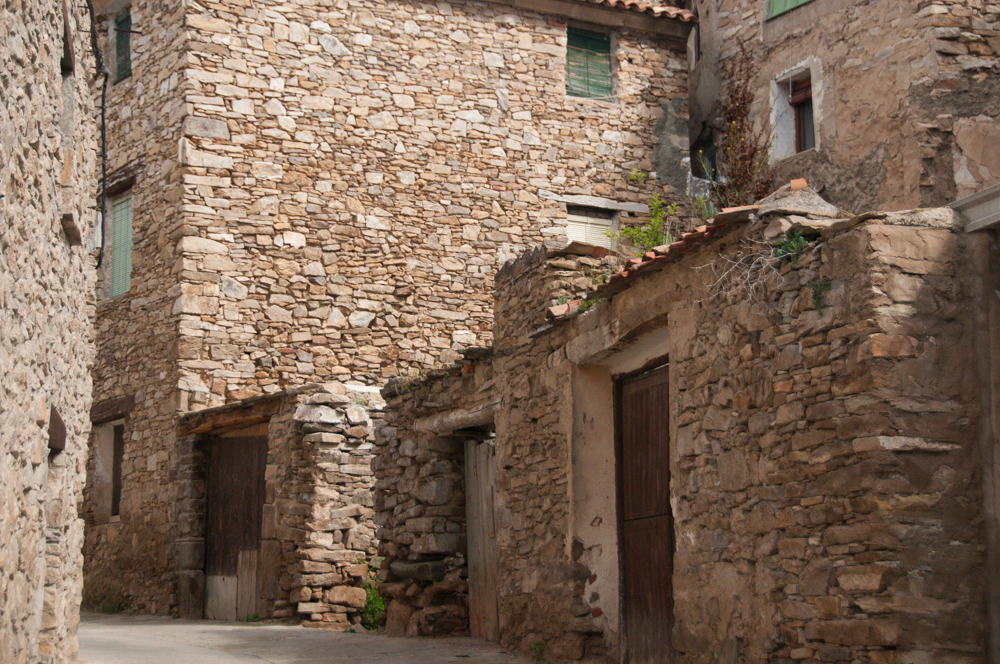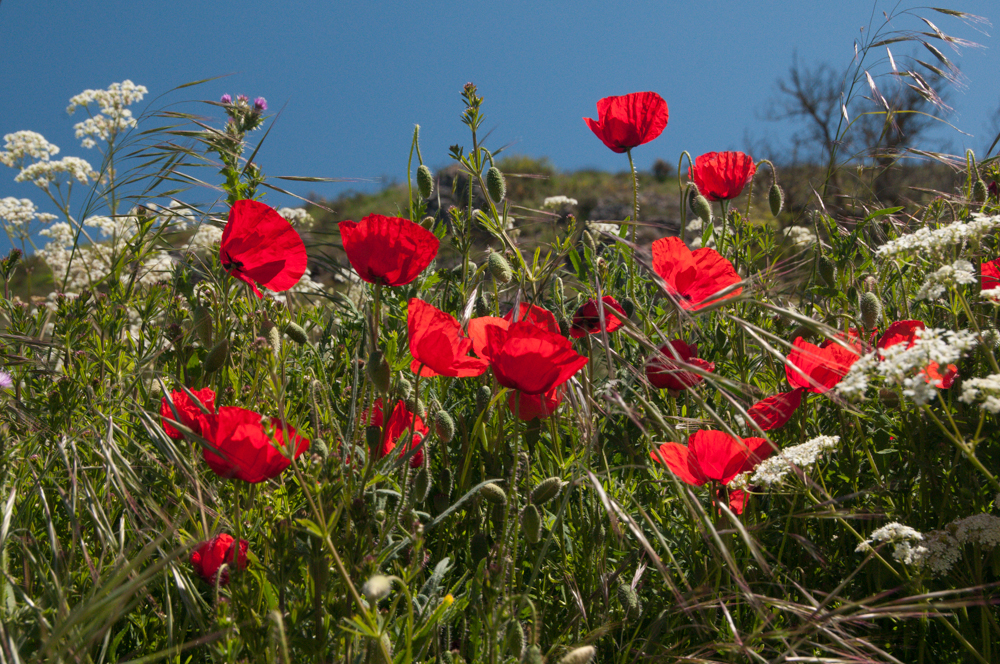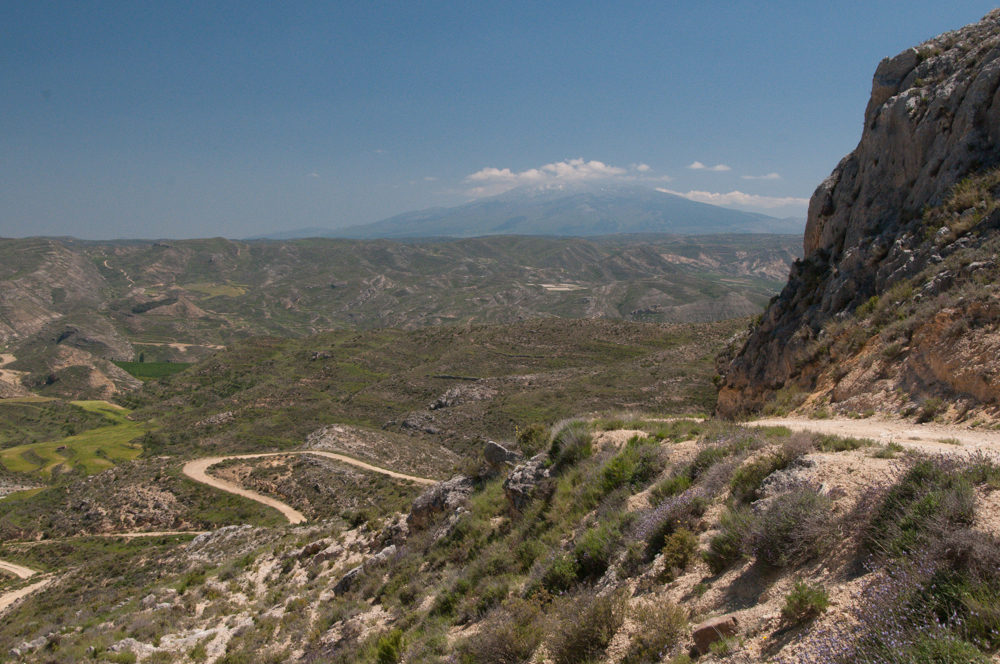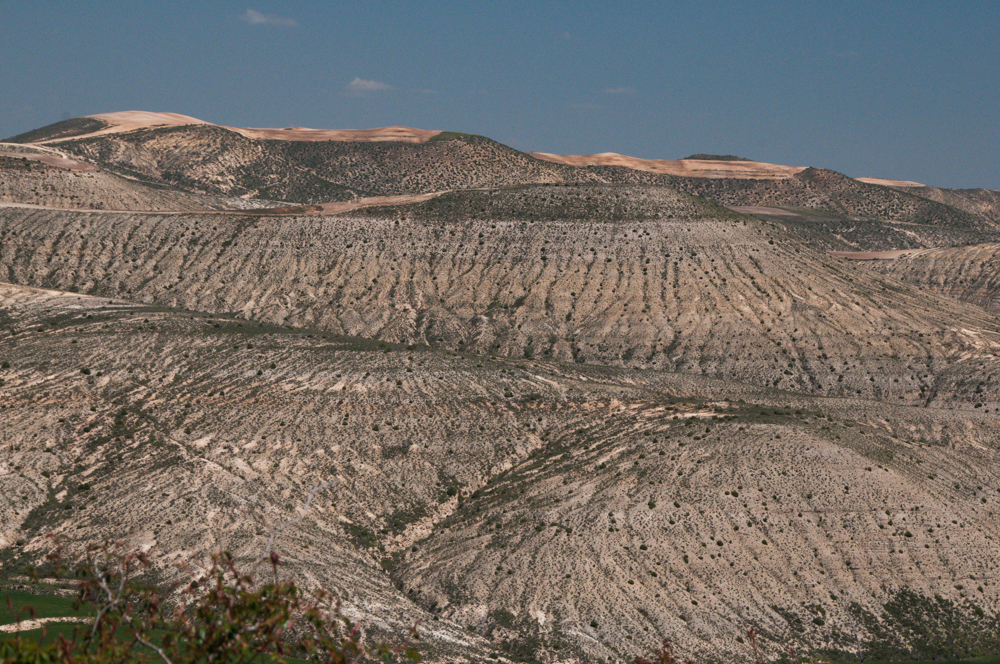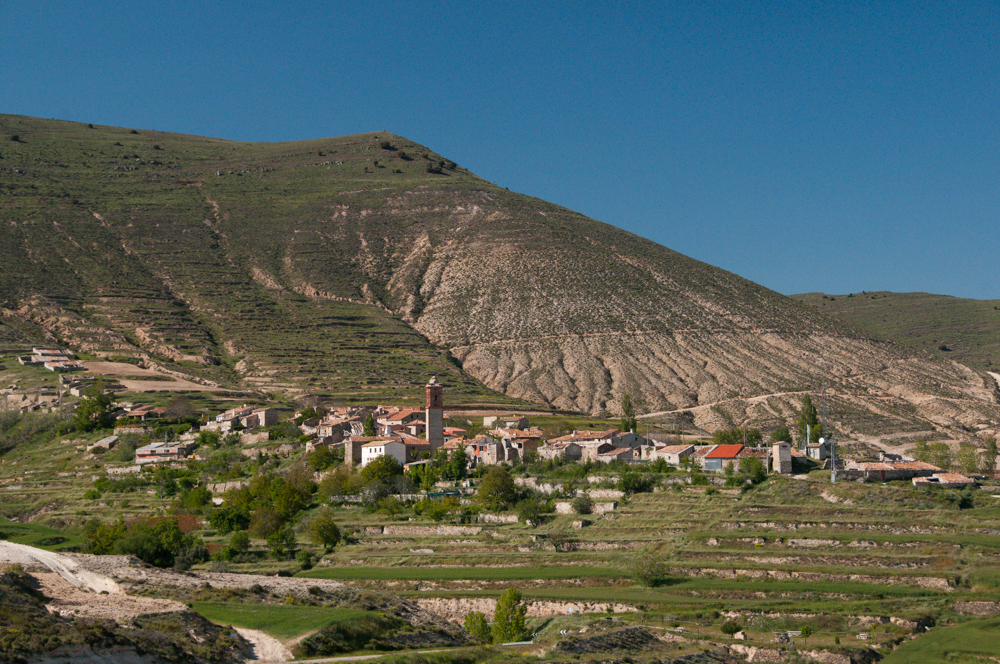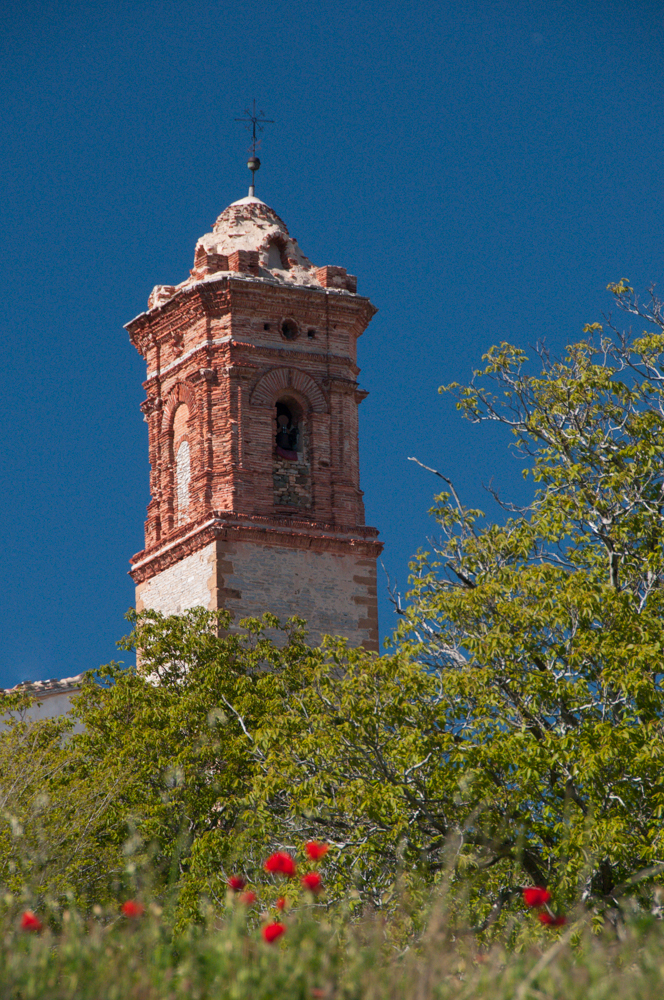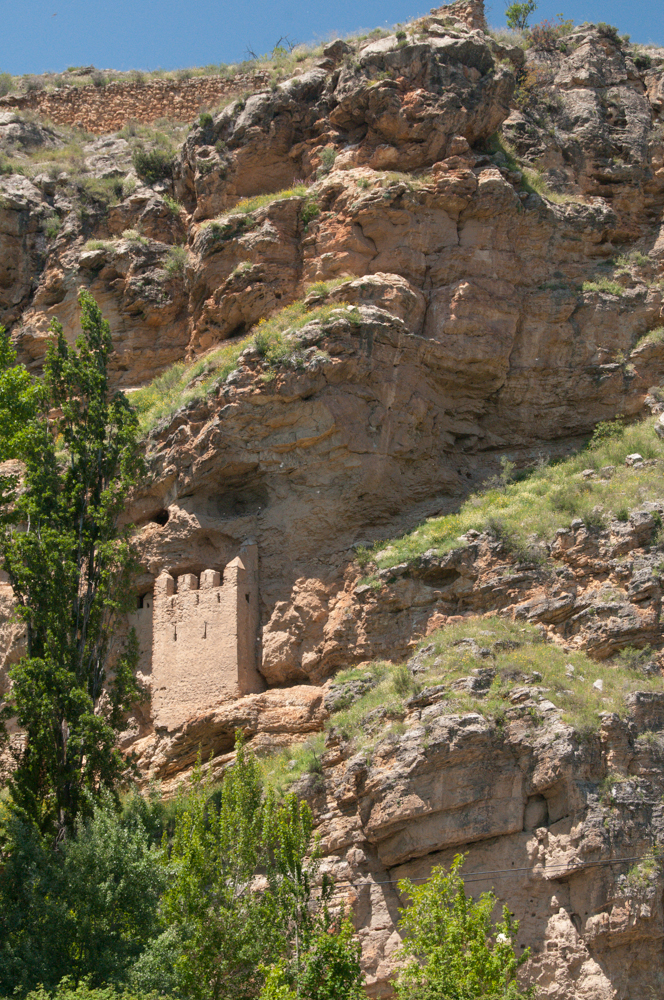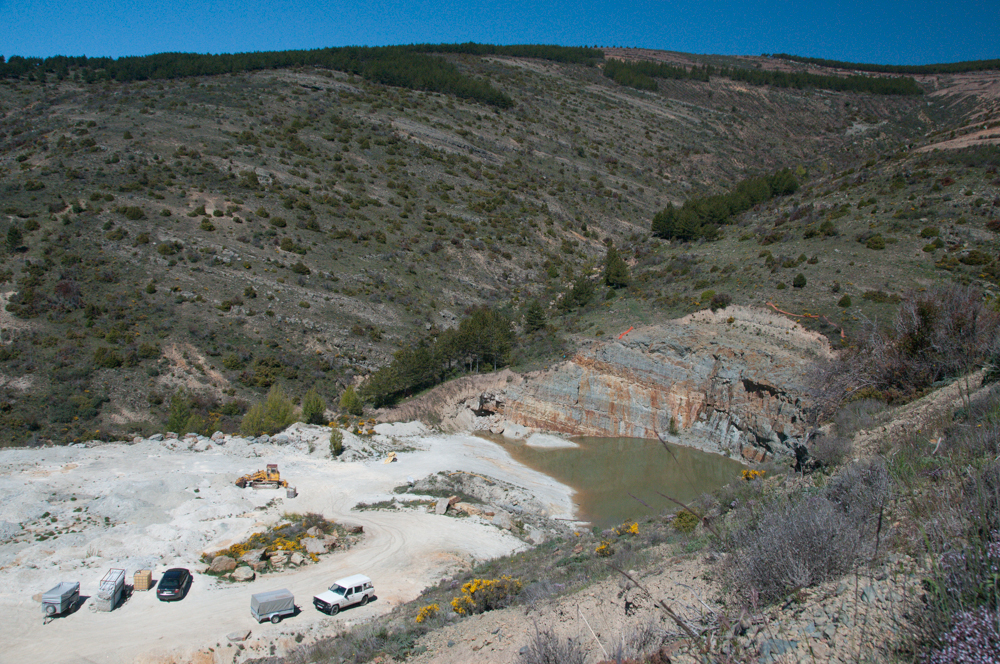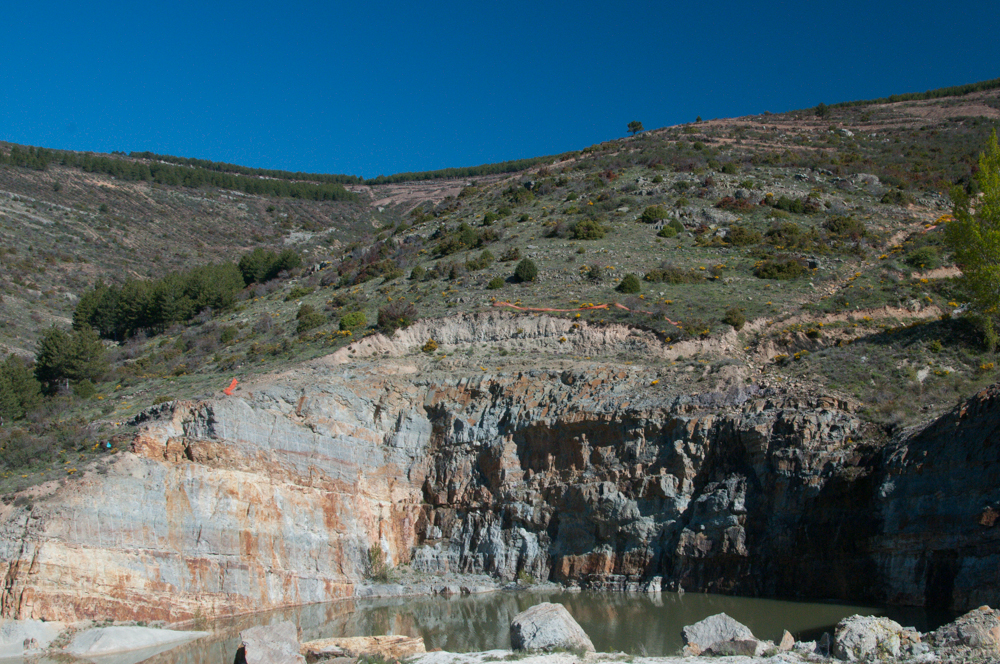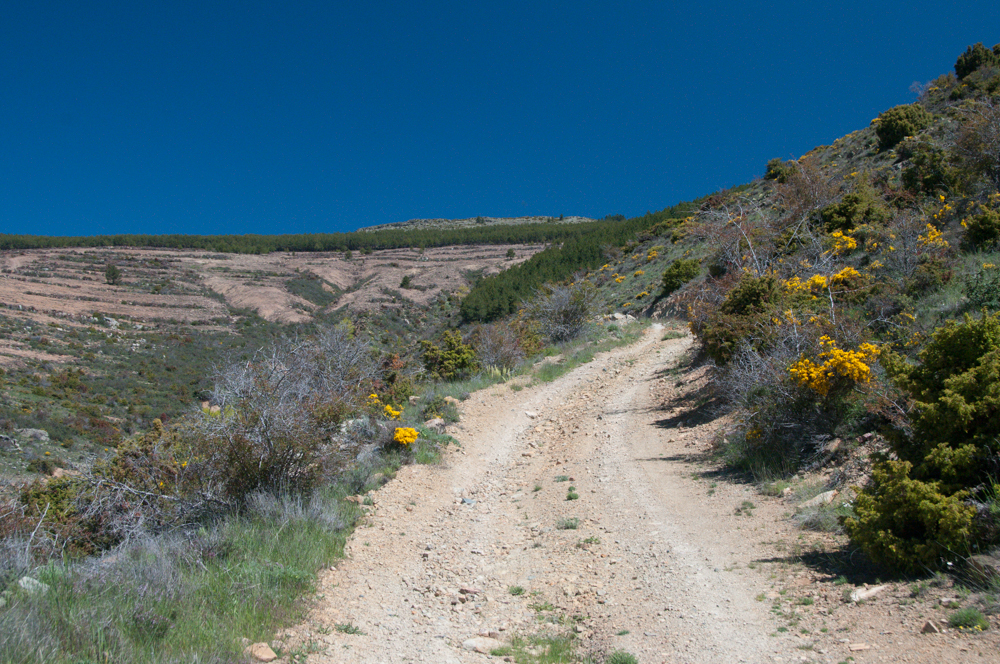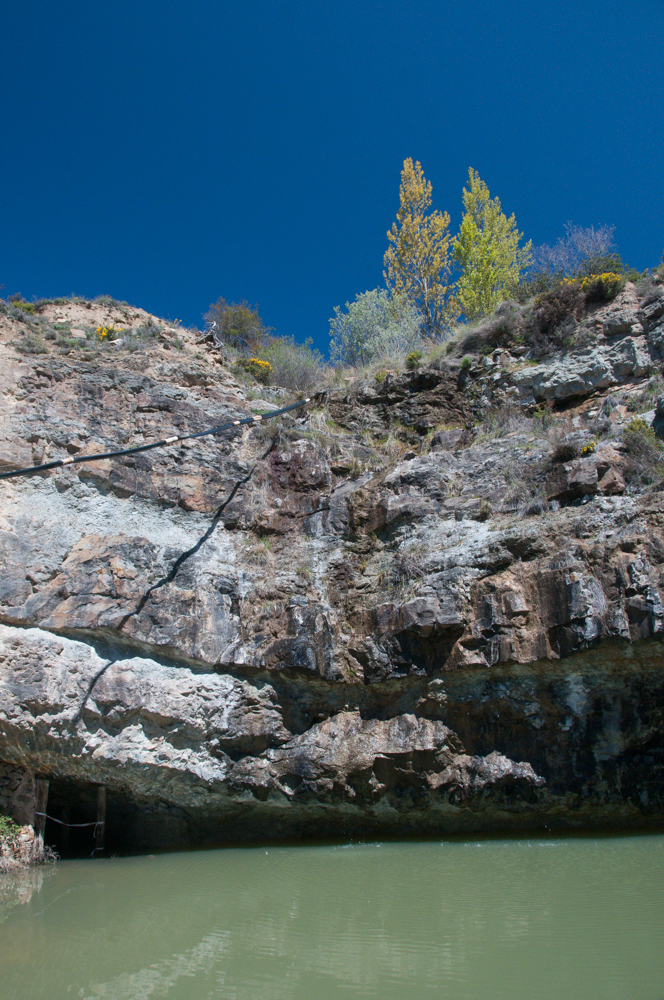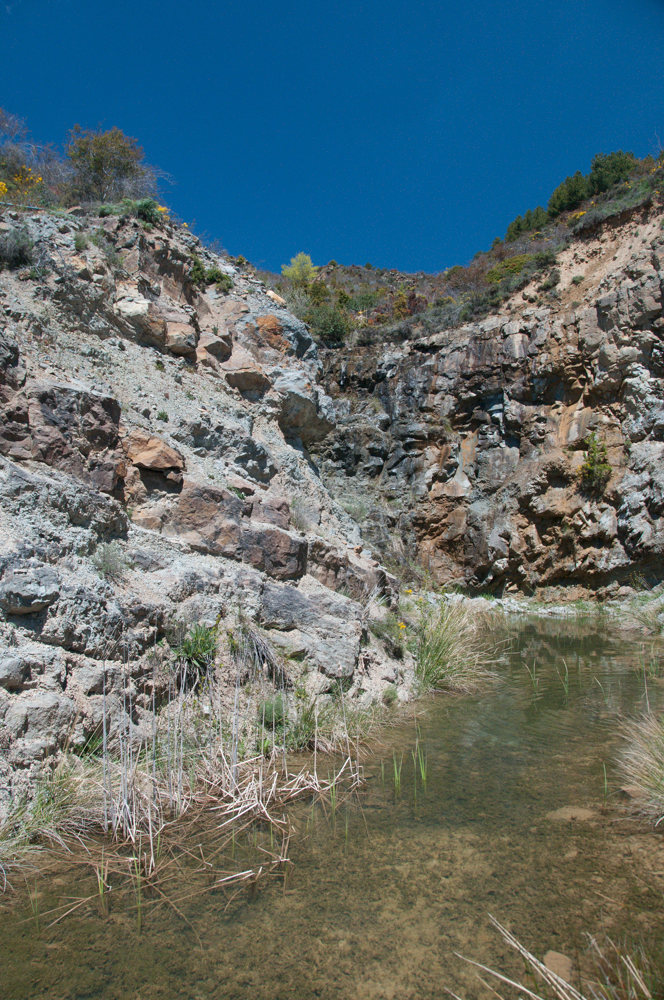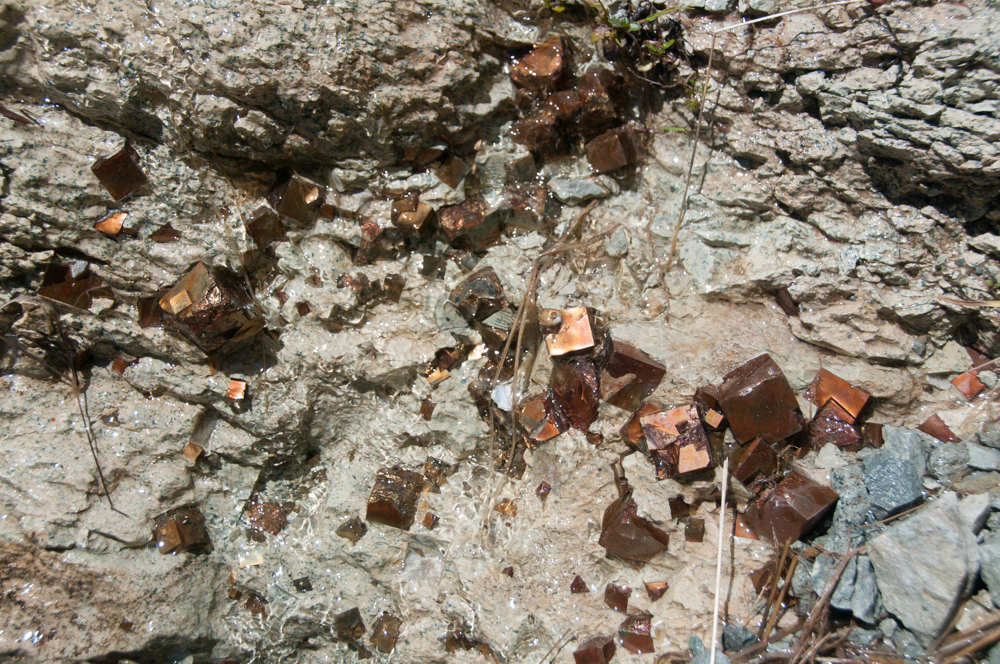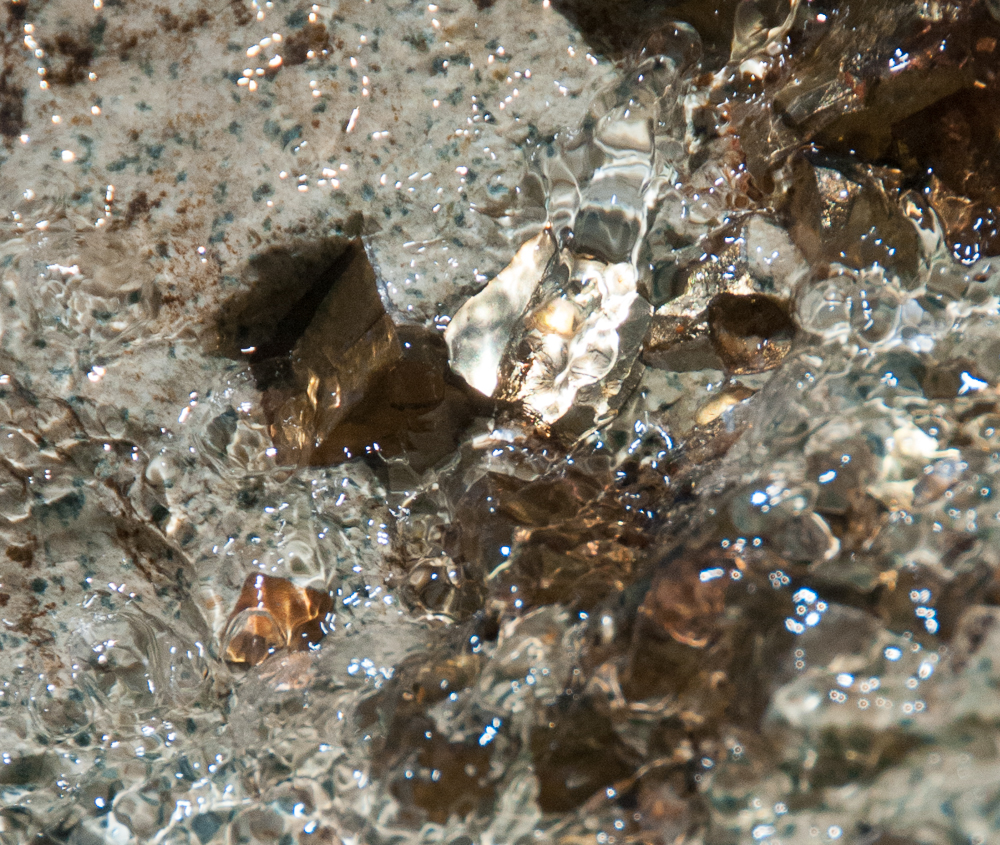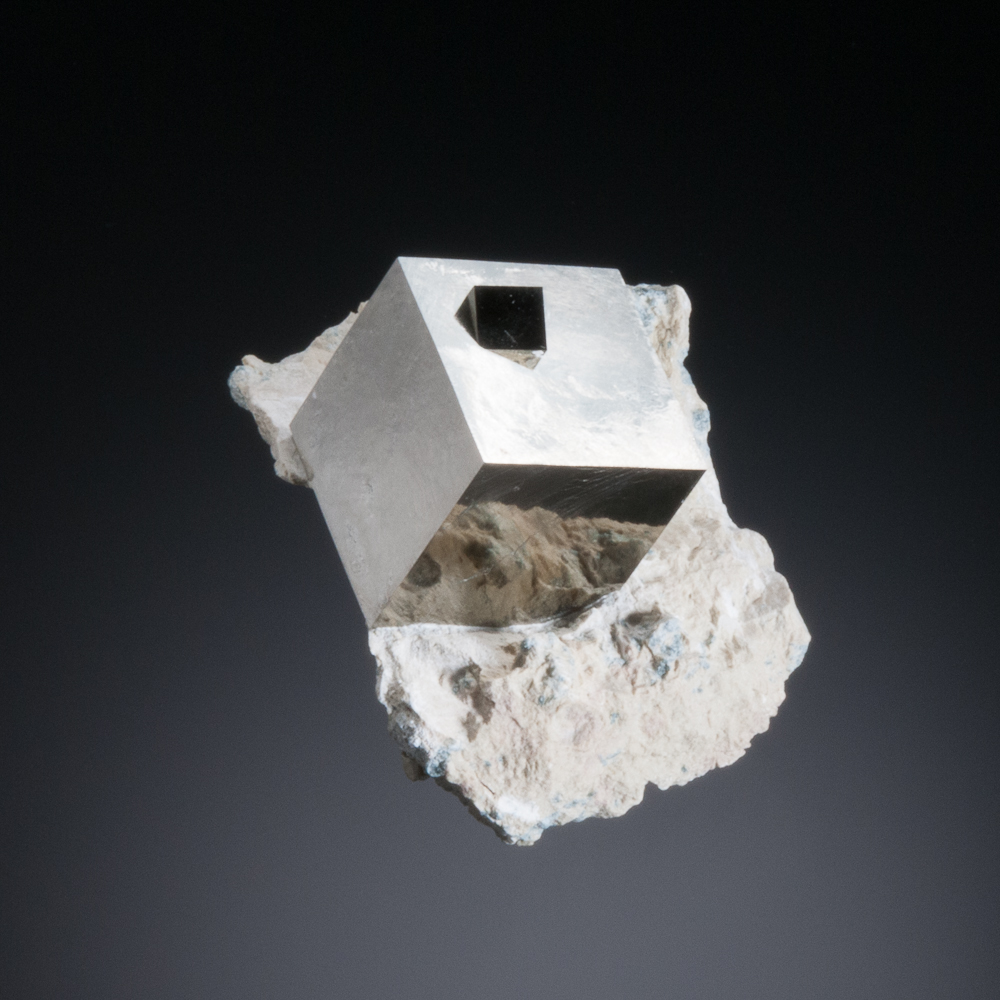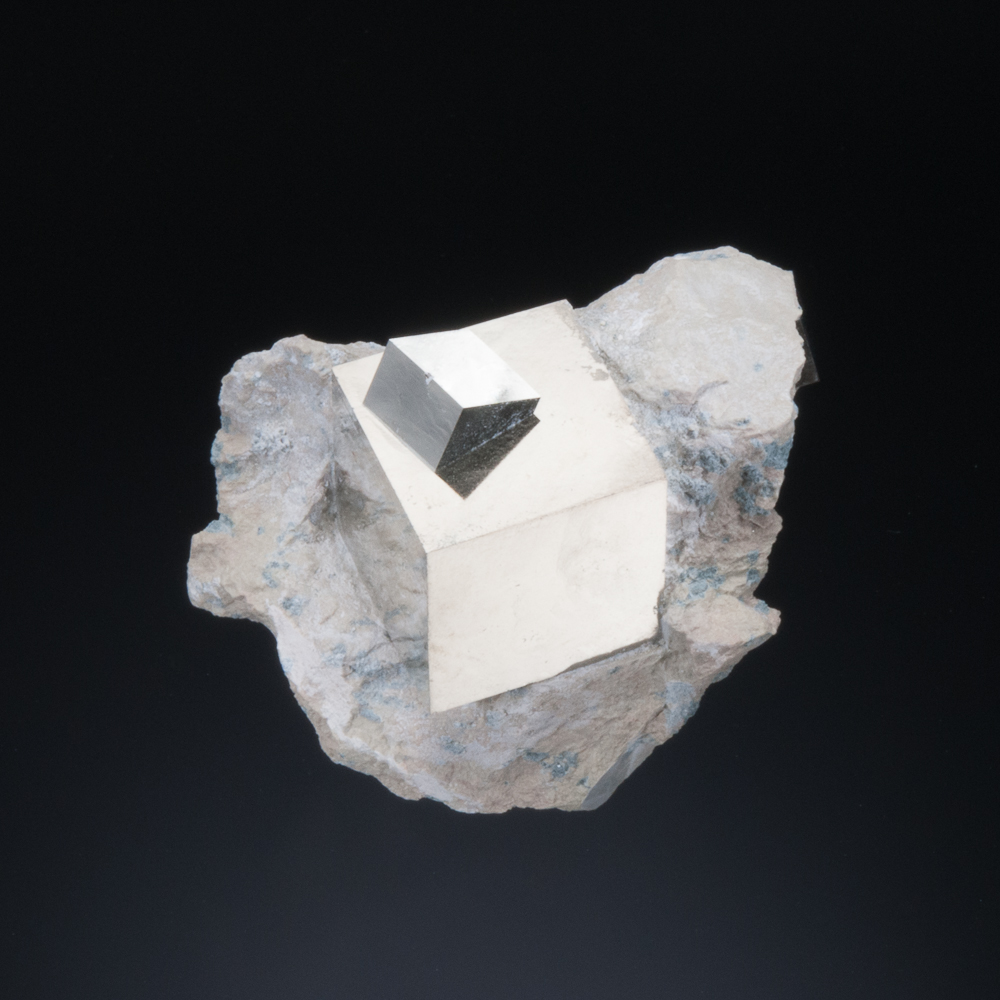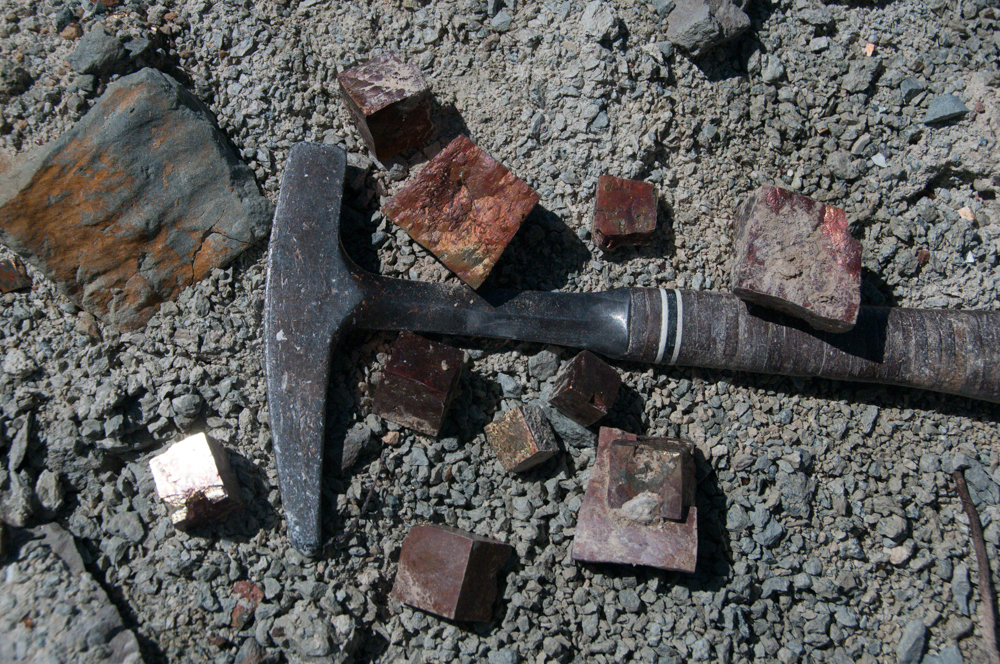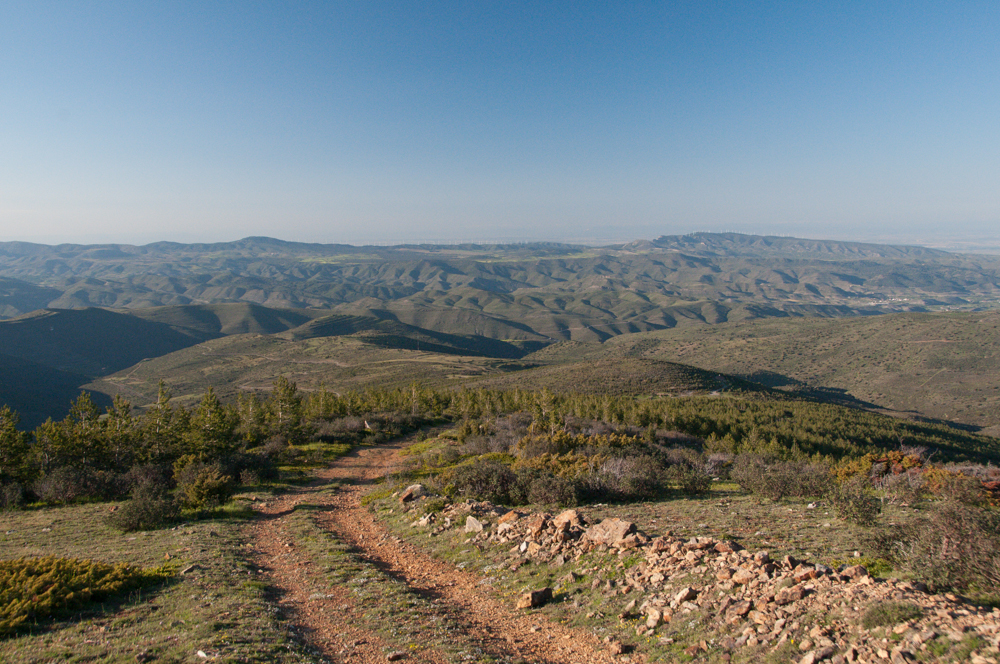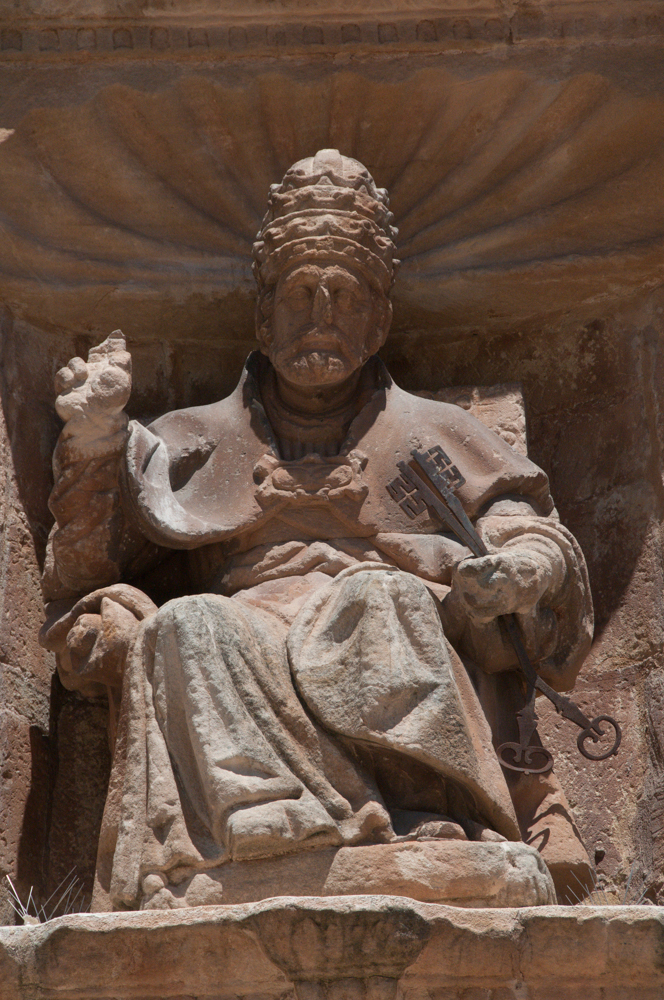Categories
Archives
We have all had that moment when first looking at a pyrite from Navajún, Spain: “No way are those cubes natural.” Even if we know that they are. I have always wanted to see them in the ground…
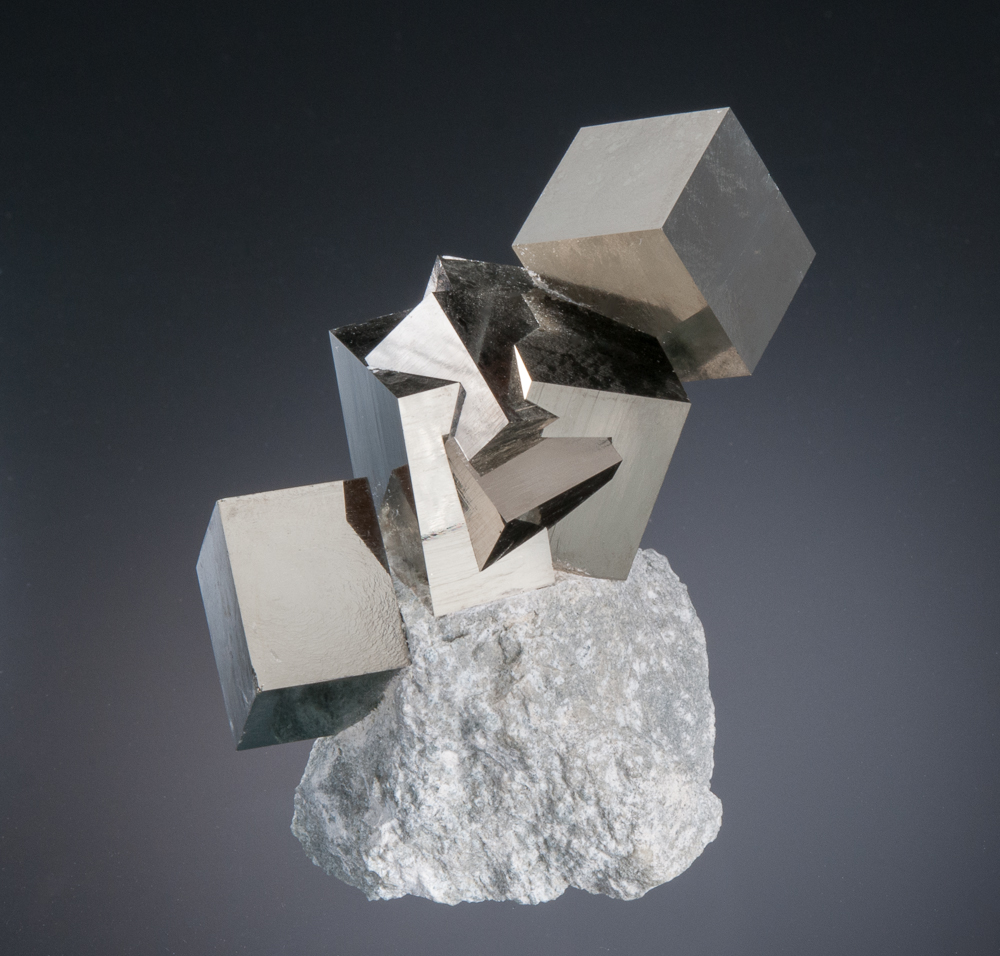 Pyrite Crystals from the Victoria Mine, Navajún, La Rioja, Spain – 7.2 x 7.1cm
Pyrite Crystals from the Victoria Mine, Navajún, La Rioja, Spain – 7.2 x 7.1cm
In June, 2013, I was fortunate to be invited to visit Navajún, to see what is truly one of the most remarkable mineral occurrences known. Just beyond the tiny hamlet of Navajún stands the Spanish mountainside that has produced the stunning perfect pyrite cubes that have become famous around the world. This occurrence, developed and operated solely to produce pyrite specimens, is called the Mina Ampliación a Vitoria (known as the Victoria Mine). To me it is nothing short of a world wonder.
La Rioja – Soria
Navajún lies nestled in the low Alcarama Mountains of La Rioja, Spain.
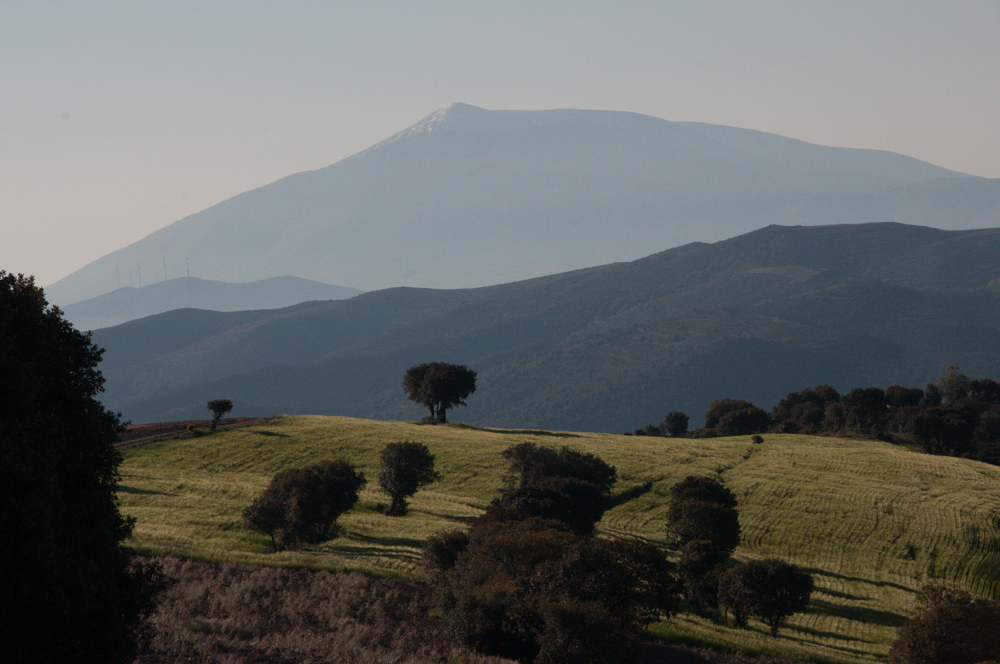 The countryside of the region of La Rioja – and neighbouring Soria / Castilla and Leon – is idyllic.
The countryside of the region of La Rioja – and neighbouring Soria / Castilla and Leon – is idyllic.
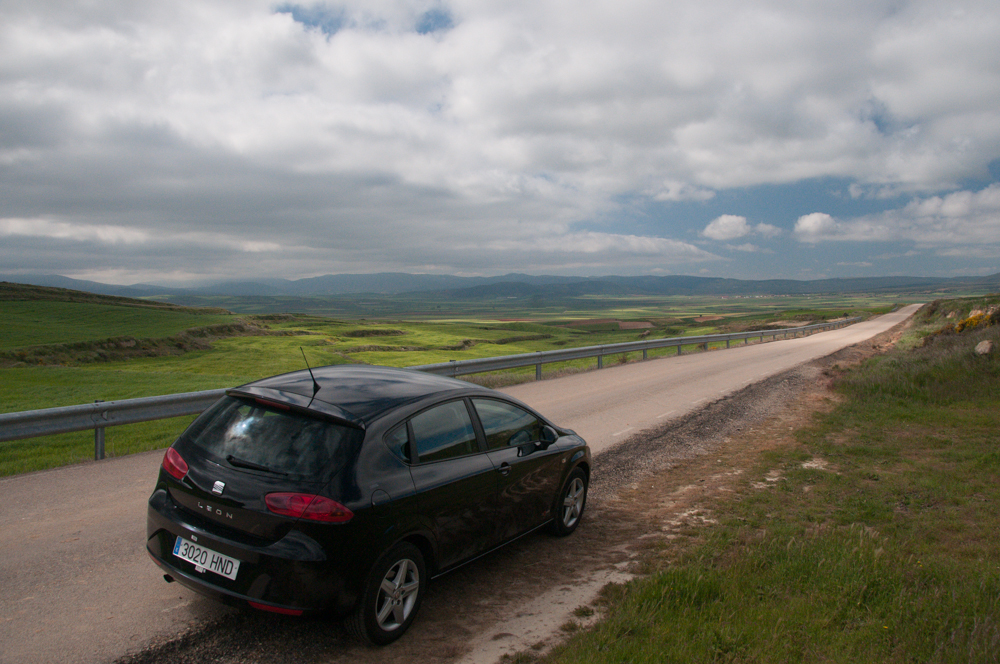 In places, the roads traverse fields and open farmland.
In places, the roads traverse fields and open farmland.
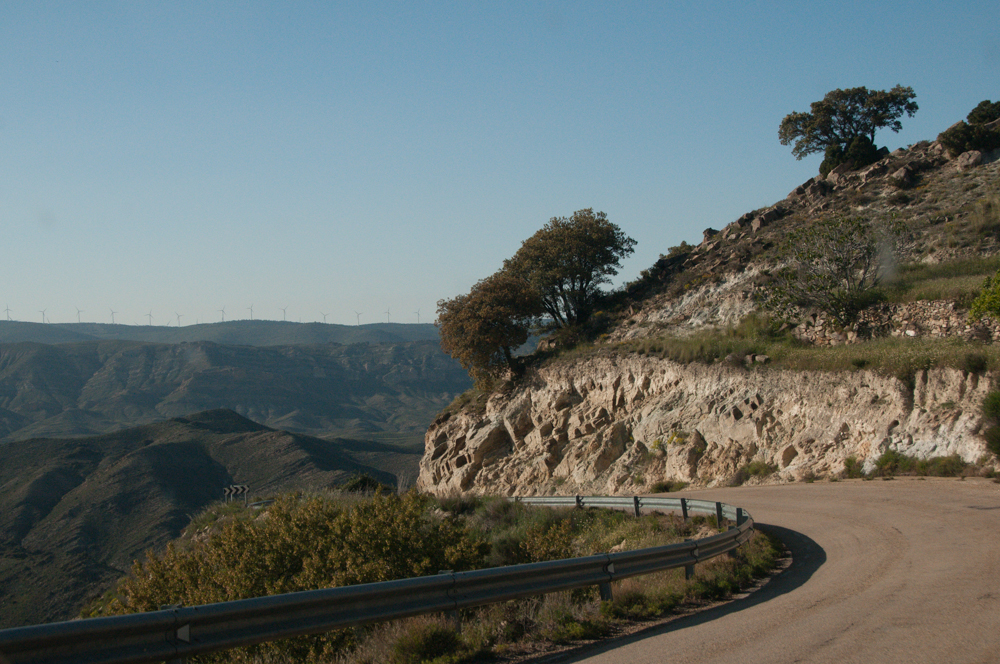 However, most of the routes wind around hills and valleys.
However, most of the routes wind around hills and valleys.
The land itself is sculpted with thousands of ancient terraces – it is hard to imagine the endless hard work that was expended on the terraces of this region in days of old. They literally comprise hill after hill – the terraces themselves define much of the landscape!
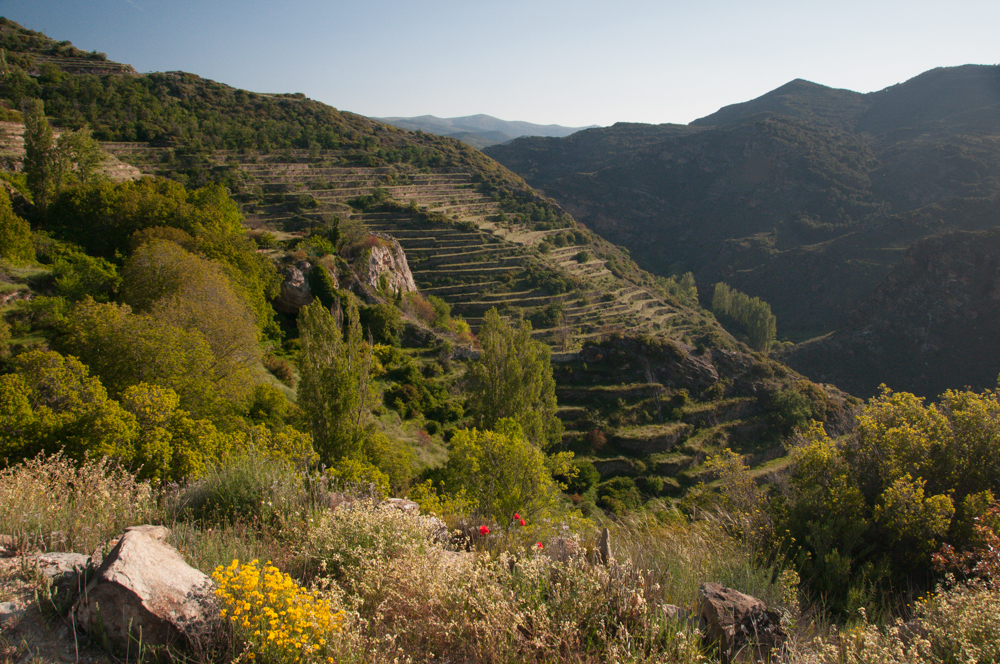 Steep terraces down into a valley
Steep terraces down into a valley
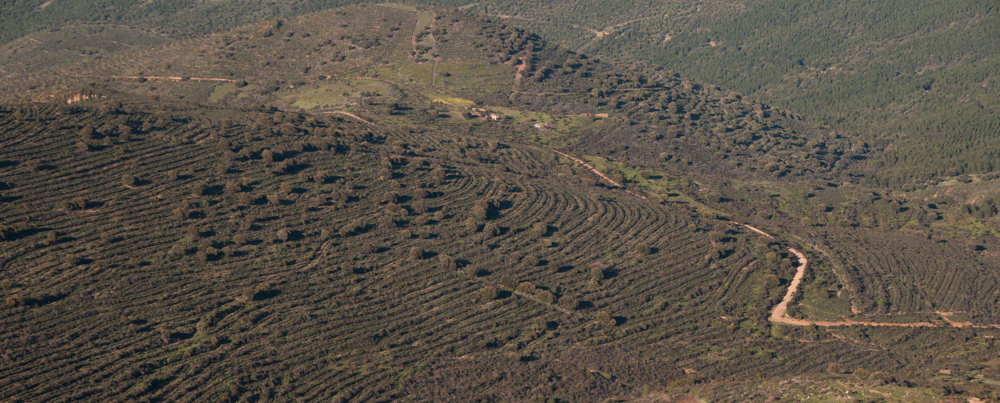 A landscape comprised of terraces – kilometre after kilometre
A landscape comprised of terraces – kilometre after kilometre
The hilltops are dotted with villages that date back hundreds of years…
The towns are graced with beautiful historic architecture…
Castilruiz
…and wonderful narrow streets evoking the past.
In June, the hills ring with birdsong, the swallows dip and weave, and the wildflowers – particularly poppies – are everywhere.
Navajún itself is certainly off the beaten path, accessed after driving many kilometres of winding roads through the scenic hills, valleys and badlands of the Alcarama Mountains.
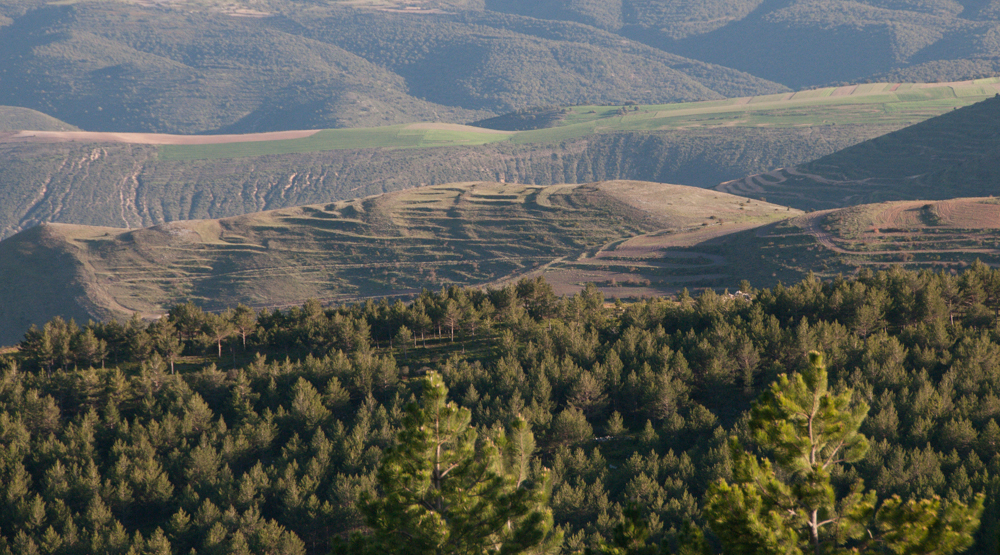 Terraces beyond the trees, near Navajún
Terraces beyond the trees, near Navajún
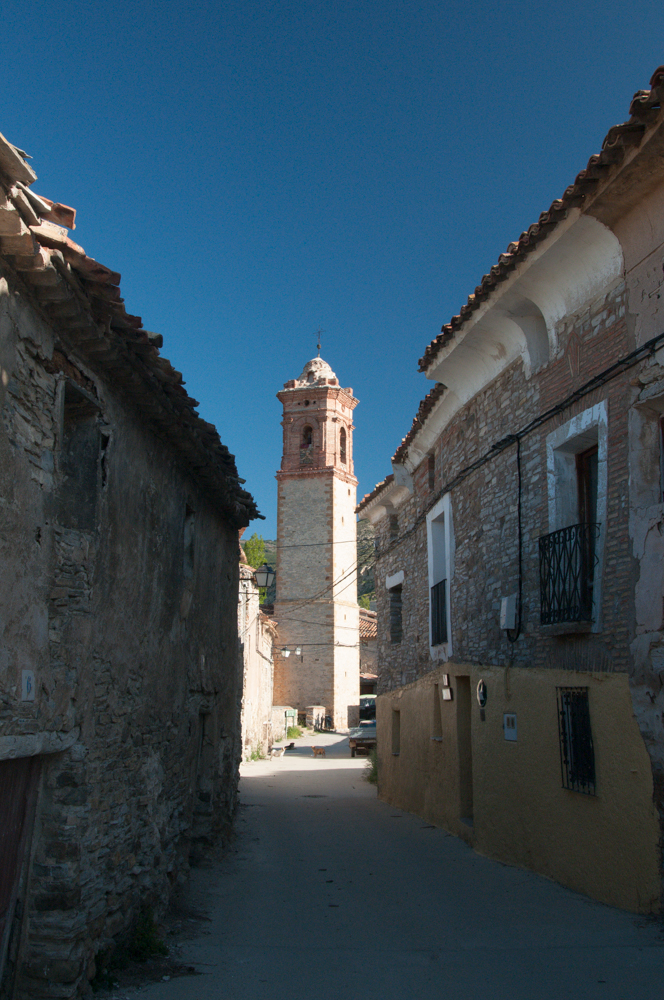 Navajún (main street, rush hour)
Navajún (main street, rush hour)
History – Ancient Uses of Navajún Pyrite
The mining concession for the Victoria Mine is modern, dating to 1965. However, these lands of Rioja have been inhabited by many different peoples over the ages, some of whom in fact collected and used by the pyrite cubes themselves. The inhabitants of what is now Navajún in the time period around 300BC used the pyrite crystals for magic and these local inhabitants were known as the Piritas (I love that!). During the Roman Empire, the crystals were collected and exported back to Rome where they were used as tiles in mosaics. During Medieval times, the pyrites were used locally in medicine – small cubes were ingested (!). I don’t know what the heck they were thinking – composition aside, those cubes are incredibly sharp. I would not be surprised if eating the pyrites contributed to the decline and disappearance of this Medieval community.
The Victoria Mine
In 1965 Pedro Ansorama Garret obtained the exploration concession for the Victoria Mine, and the mining concession has been operated for mineral specimens continuously since 1970.
The mine is now owned and operated by his son, Pedro, and the mining operations and preparation laboratory involve a team of several people. All of the workings are susceptible to water inflow (as you can see) and pumping is required at times – significant pumping was planned to occur not long after my visit.
The mining operations have been conducted on three levels of the mountainside. The lowest level is all open pit – it is the largest of the workings and to date has produced the most spectacular specimens.
The second level, accessed by a road that takes you a few hundred metres further along, has also produced some spectacular specimens.
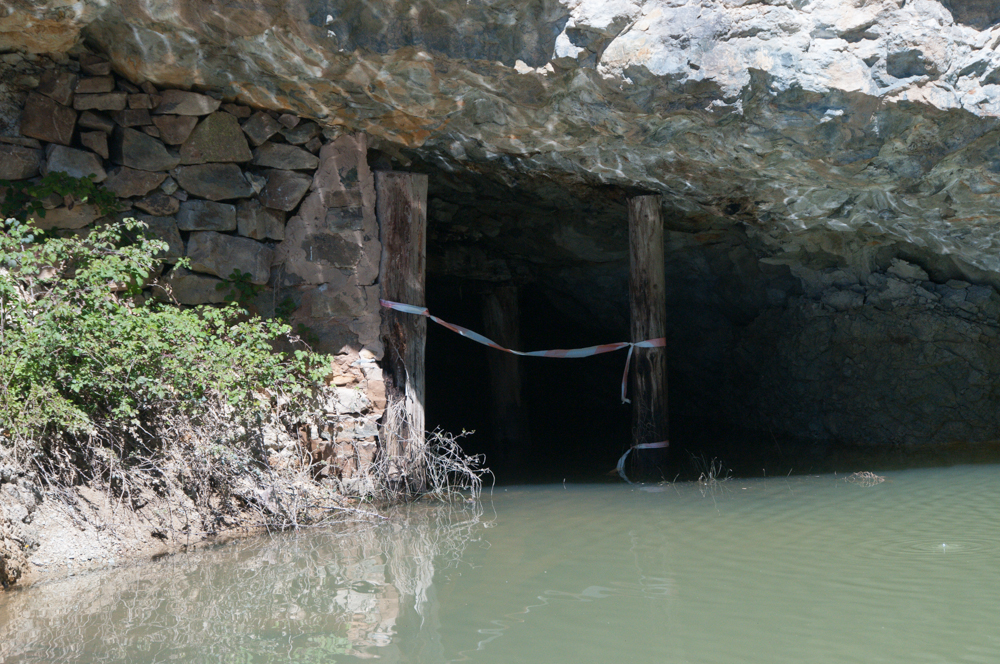 Work on Level 2 has included the development of an adit.
Work on Level 2 has included the development of an adit.
The third, highest, level, is described by Pedro as “reserves” – there is a good outcrop with excellent production potential, but it is likely only to be developed sometime in the future. The third level is quite beautiful, with the pyrites outcropping naturally.
In the outcropping marl on Level 3, beautiful sharp pyrite crystals line the bottom of a tiny stream coming down the hillside. How often to you get to see collection-calibre material staring up at you from within a stream?
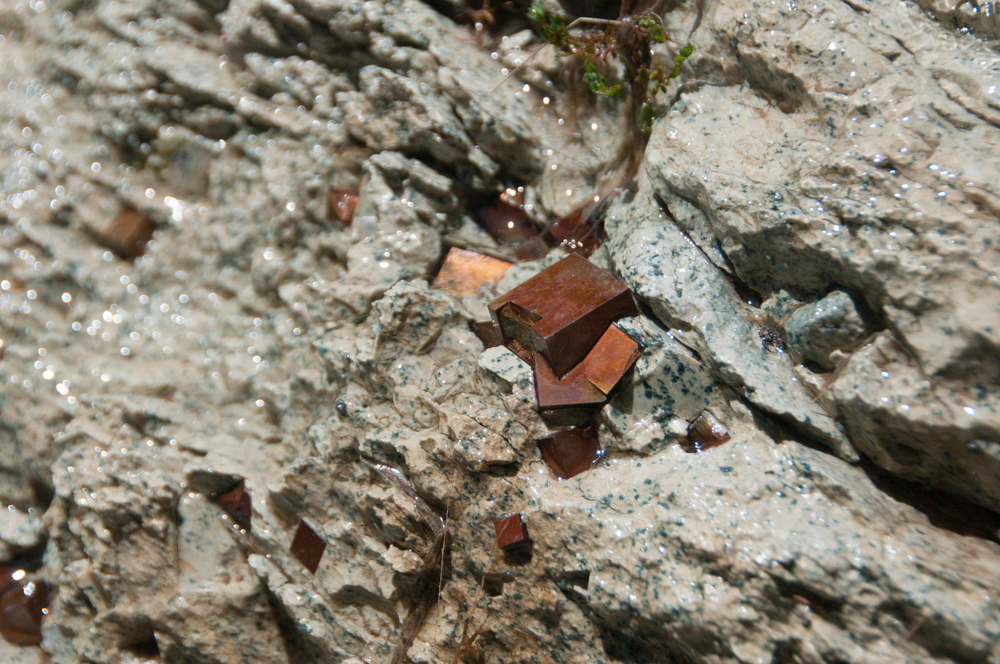 Pyrite crystals at the edge of the stream
Pyrite crystals at the edge of the stream
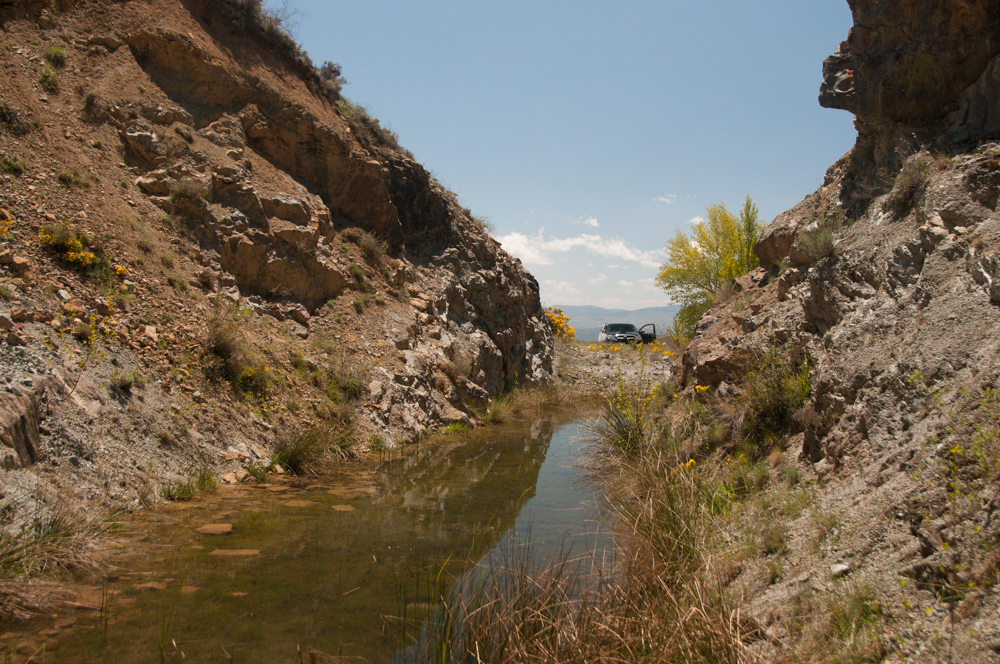 Looking back from the Level 3 outcrop
Looking back from the Level 3 outcrop
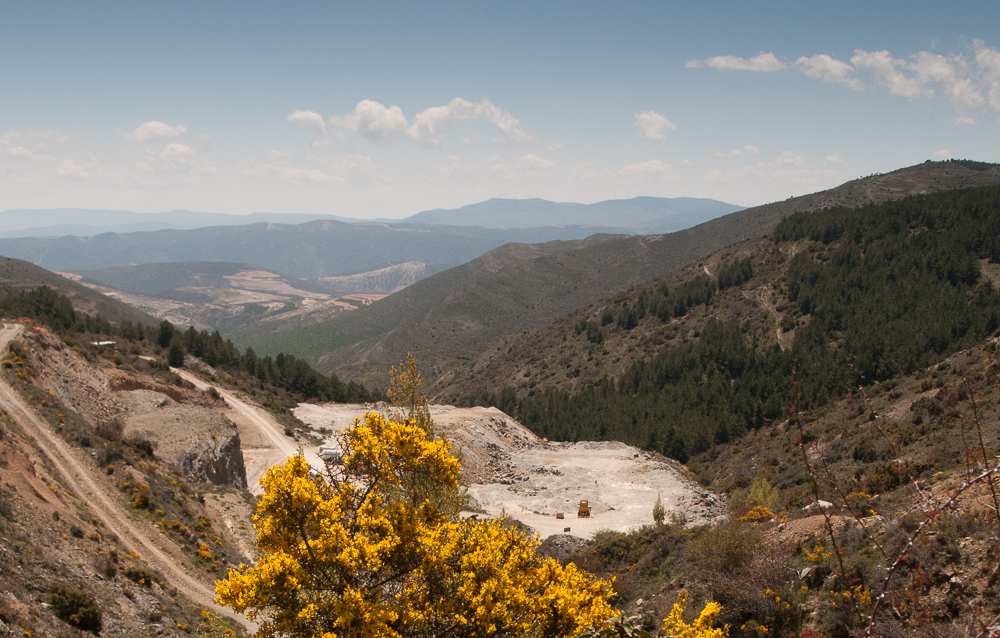 The view from Level 3 – the Level 1 dumps in the foreground and the valley below
The view from Level 3 – the Level 1 dumps in the foreground and the valley below
Geology
The host rock is marl, dating to the Cretaceous Period (spanning approximately the period from 145 to 66 million years ago). At the Victoria Mine there are three major zones where inclined Cretaceous marl containing the pyrite crystals outcrop at surface. The thickness of each of these strata varies, but averages about 2.5 metres. The mean inclination of the formation is approximately 15%.
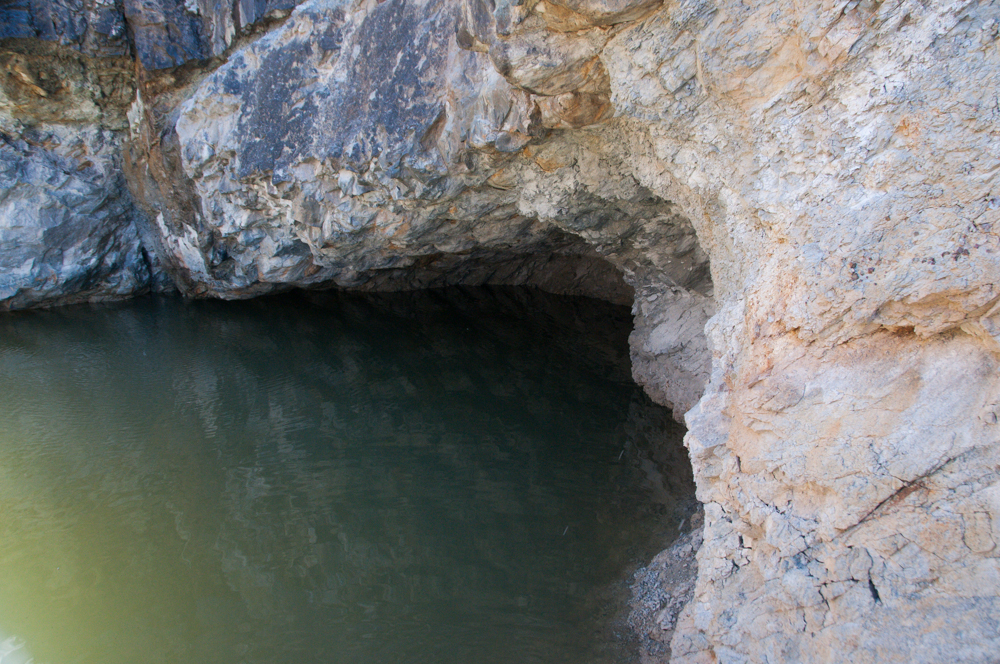 Marl, slightly inclined, hosting pyrite crystals (visible at right side of photo)
Marl, slightly inclined, hosting pyrite crystals (visible at right side of photo)
Mineralogy
Pyrite from the Victoria Mine is often mirror-bright, sharp and perfect beyond compare. Although pyrite is too abundant and wonderfully varied to proclaim the “world’s best pyrite”, these are generally regarded as the world’s best cubic crystals of pyrite. Crystals range in size from 1mm up to, rarely, about 20 cm. As is true throughout the wold of minerals, usually the larger crystals are not as brilliantly lustrous and razor sharp as the smaller ones – although stunning, jaw-dropping large crystals have been found here.
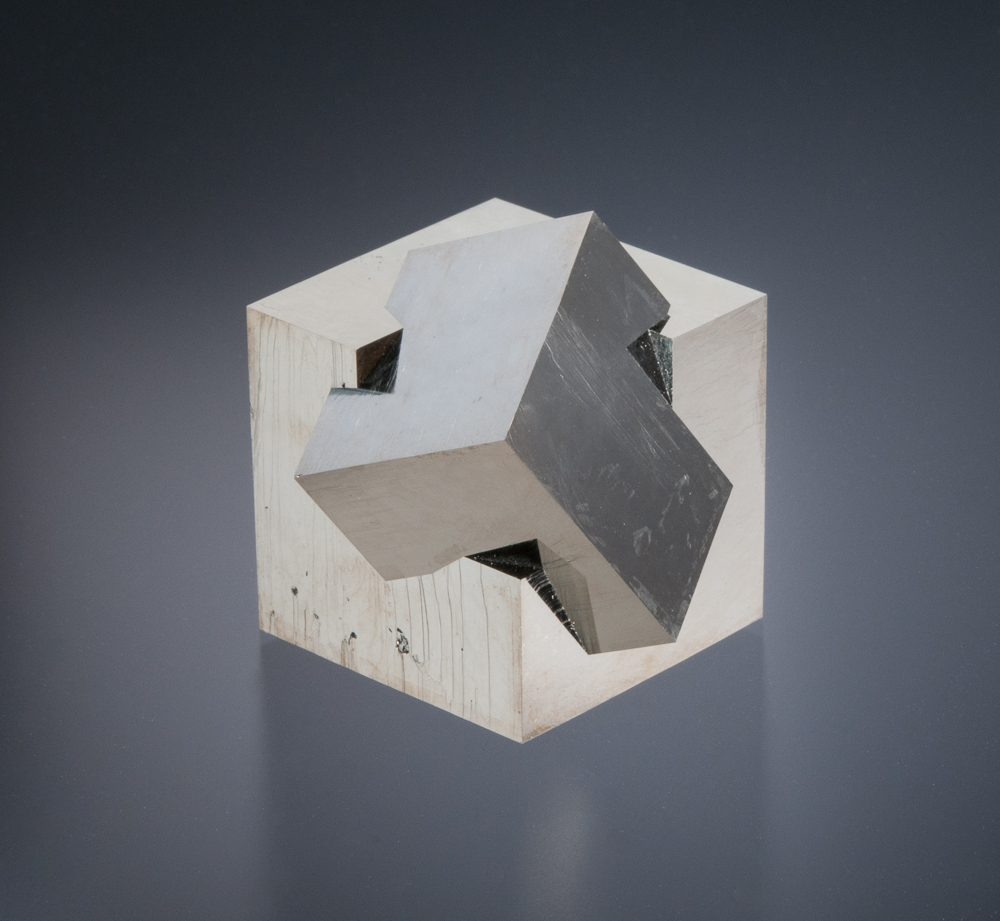 Pyrite from the Victoria Mine, Navajún, La Rioja, Spain – 4.5 x 4.3 cm
Pyrite from the Victoria Mine, Navajún, La Rioja, Spain – 4.5 x 4.3 cm
The pyrite commonly occurs demonstrating simple cube morphology, although other crystal forms are also found at the Victoria Mine (and at other nearby localities in this region). Pyritohedral crystals are also present at the locality and cuboctahedral crystals have been found as well, but are rare at the Victoria Mine.
Pyrite from the Victoria Mine, Navajún, La Rioja, Spain – 6.0 x 4.2 cm
Pyrite from the Victoria Mine, Navajún, La Rioja, Spain – 6.1 x 5.4 cm
Although what we tend to see in the photographs, museums and mineral shows are the perfect sharp cubes with mirror lustre, in fact the mode of occurrence and condition of Victoria Mine pyrites varies considerably. Some of the pyrite crystals can be quite distorted, and some show varying degrees of oxidation.
The pyrite crystals occur encased within a very thin soft coating – this coating protects the crystals and is undoubtedly part of the reason we are able to enjoy such wonderfully preserved crystals, but on the other hand, it leads the crystals to want to detach from the matrix!
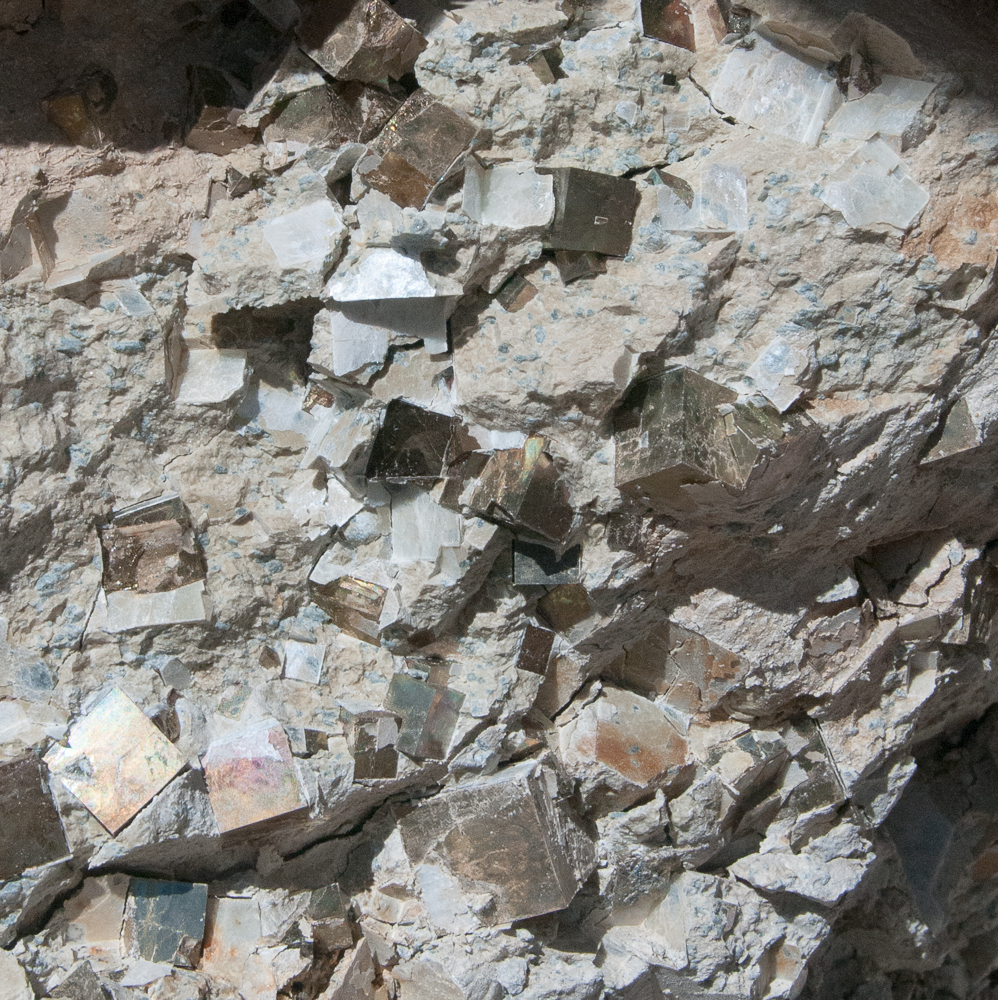 Pyrite crystals to 3cm in the wall on Level 1 – note the thin white shell material in which the crystals are encased.
Pyrite crystals to 3cm in the wall on Level 1 – note the thin white shell material in which the crystals are encased.
The matrix itself is incredibly weak and friable, and water causes it to deteriorate – the only thing this stuff wants to do is crumble. (Important Note: NEVER clean a matrix pyrite specimen from Navajun in water – it will fall apart!).
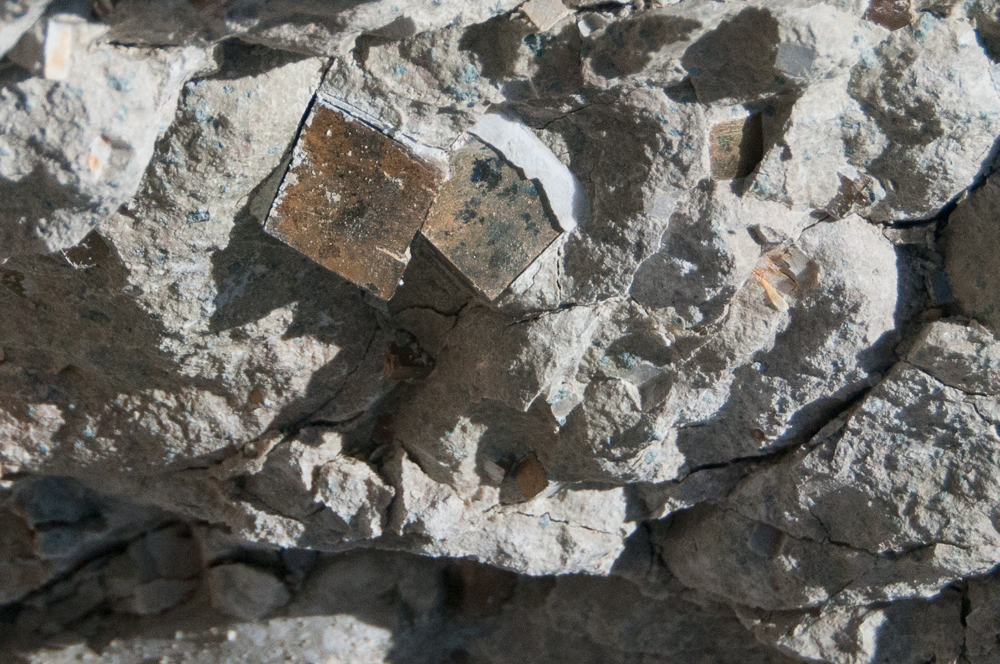 Pyrite crystals to 2cm, with their white coating, waiting to fall out of the crumbling marl on Level 1
Pyrite crystals to 2cm, with their white coating, waiting to fall out of the crumbling marl on Level 1
Also, owing to the matrix, many joints between interlocking pyrite crystals have weakened, so that when you collect them, they most often detach and roll out of the rock as individual single crystals with points of contact where they were formerly attached to or interlocked with others. This is absolutely not always the case with tight groups or, for example, closely interlocked pairs, but overall it is incredibly common. For this reason, collecting at the working face is actually a bit of a tease – they look so awesome in the wall, but just try collecting a nice mineral specimen!
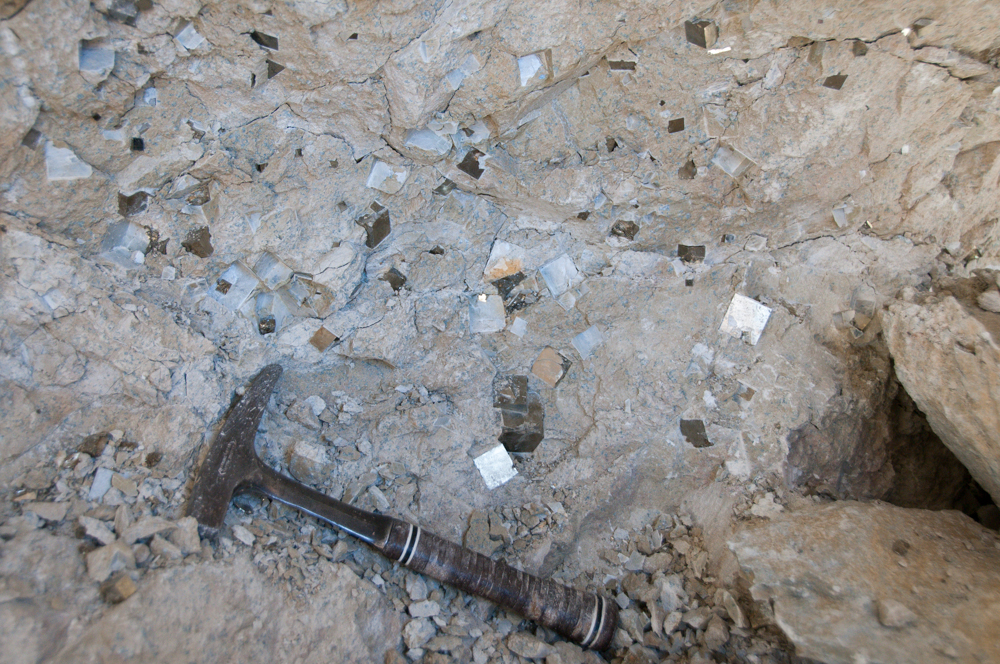 Pyrite crystals to approximately 3cm in the wall on Level 1 – the host rock here was slightly less friable
Pyrite crystals to approximately 3cm in the wall on Level 1 – the host rock here was slightly less friable
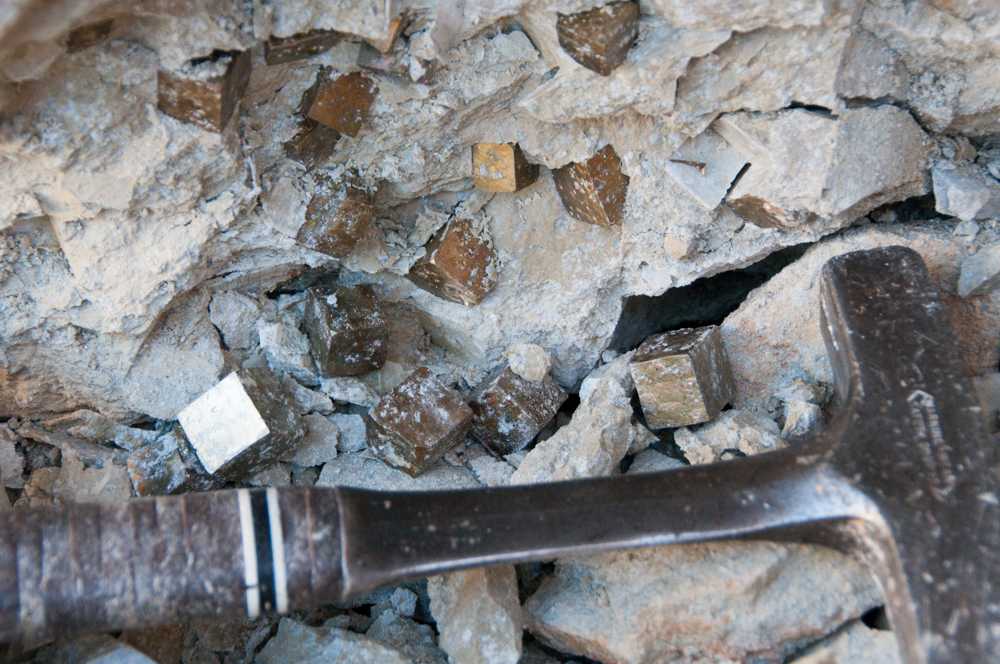 Pyrite crystals in a different section of Level 1
Pyrite crystals in a different section of Level 1
Now that I have seen the crystals in situ at the locality, I truly appreciate the challenge of preserving them as excellent mineral specimens…
Pyrite Specimen Preparation
So if the matrix is friable and weakened by water (I mean some of this stuff crumbles when you simply look in its direction), and then the soft white coatings and loose crystal contacts and joints are all conspiring against us, how exactly do we end up with the spectacular pyrite specimens from the Victoria Mine?
(1) Meticulous collecting and (2) expert lab work!
After spending time at the working face I understand just how much of the value of the final specimens is the result of the amazing work that is done by Pedro and his team. Six people now work in the laboratory, year-round. Pyrite specimens, with corresponding matrix and all associated (and formerly joined), interlocking crystals are all painstakingly collected and transported from the mine to the lab together, where they are then carefully unwrapped, cleaned, and reassembled.
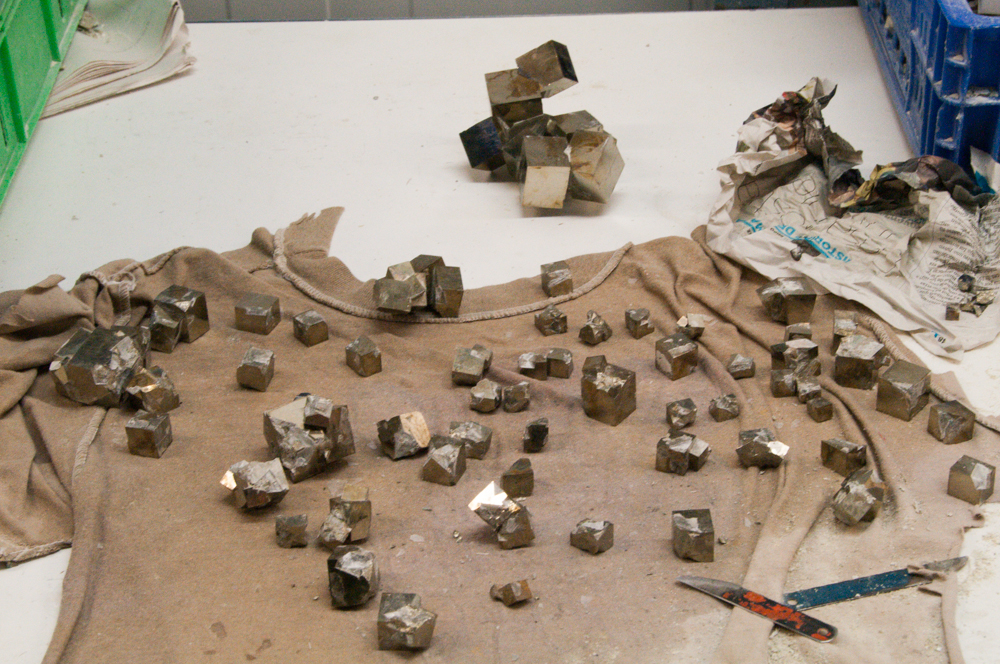 Imagine putting them all back together!
Imagine putting them all back together!
This work requires an incredible amount of patience and skill.
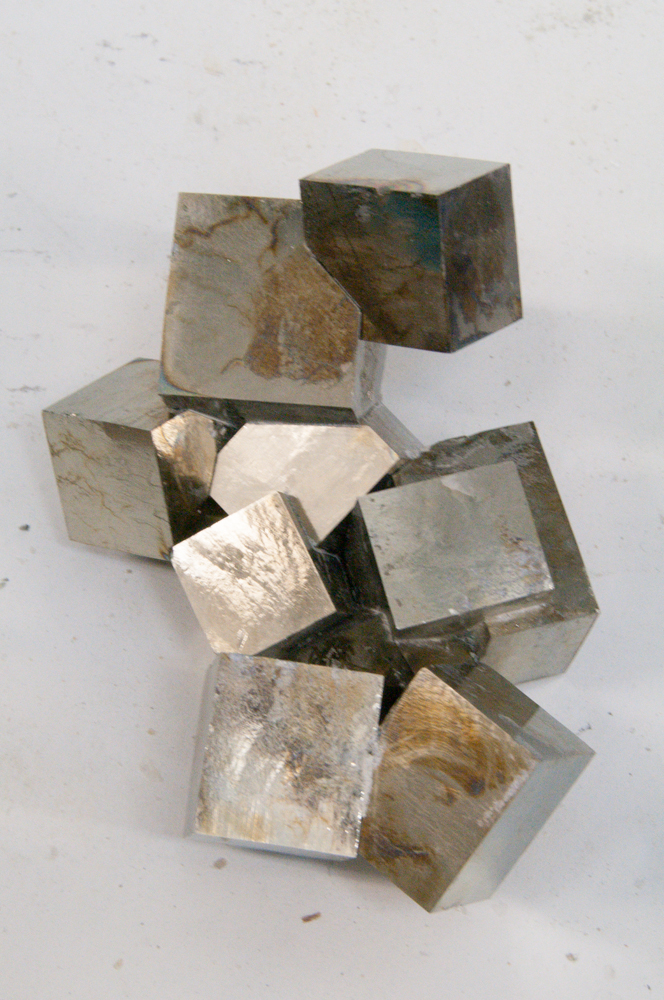 Repair work on this specimen was just finished. Group is 10cm tall.
Repair work on this specimen was just finished. Group is 10cm tall.
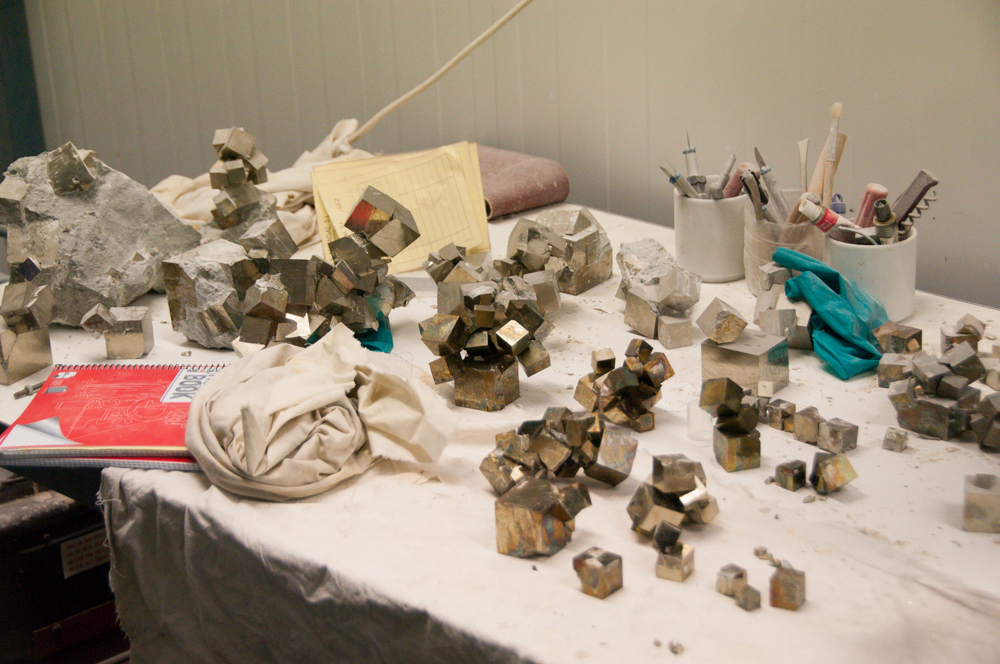 Completed specimens ready for final cleaning
Completed specimens ready for final cleaning
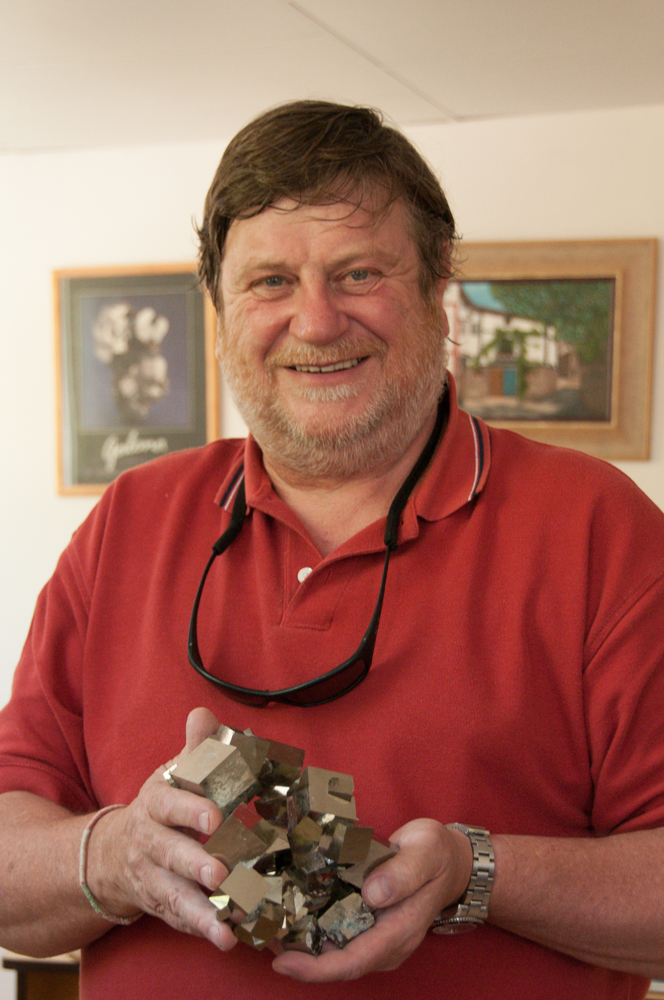 Pedro with a remarkable cluster
Pedro with a remarkable cluster
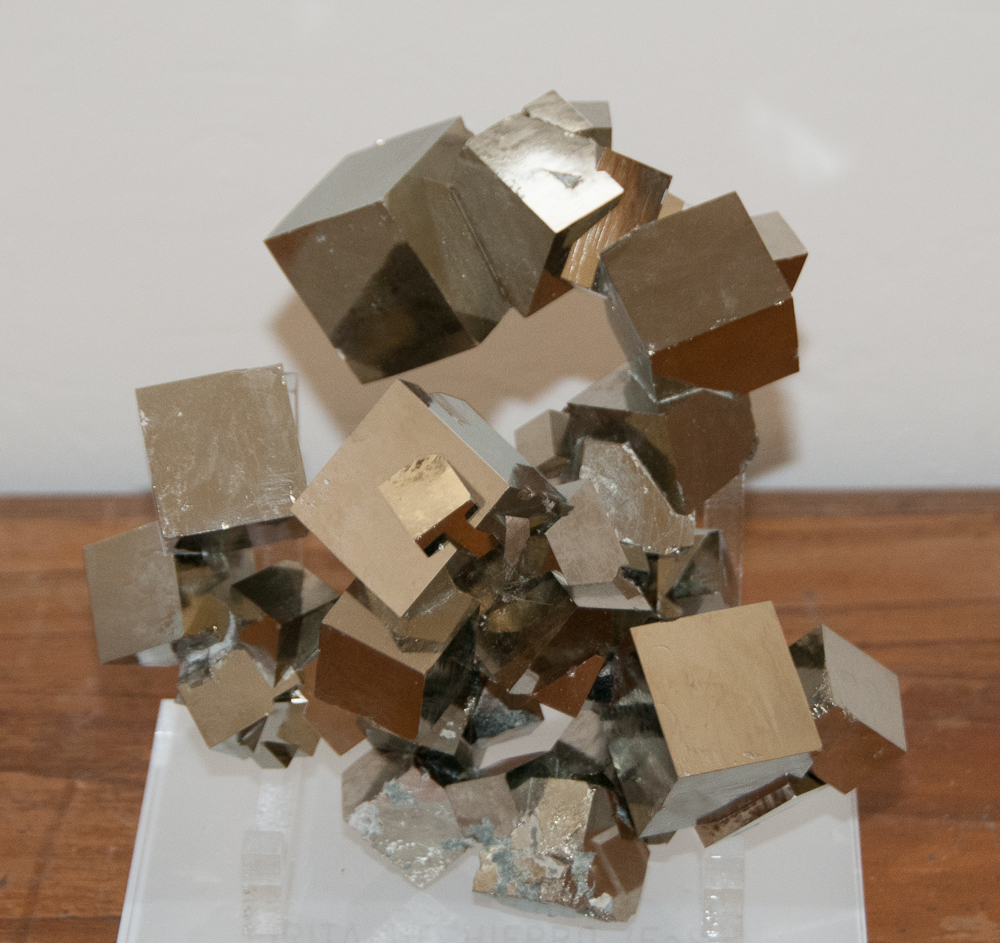 Closer view of the cluster – approximately 15 cm. A small amount of chamosite is visible on lower crystals.
Closer view of the cluster – approximately 15 cm. A small amount of chamosite is visible on lower crystals.
The work that is required to preserve the Navajún pyrites is an interesting example for consideration when it comes to the discussion of repairs in specimen mineralogy (for more on this, see Beware the Hand of Man: Fakes, Treatments, Repairs and Other Alterations). If not for this painstaking work, we would simply have loose, single crystals from the Victoria Mine, never (or virtually never) in matrix, and only sometimes remaining interlocked with others. Even worse, since so many pyrite crystals from this occurrence interlock with others, and then detach from those others when they are removed from the rock, most of the single crystals we would have would be contacted or damaged.
When the pyrites from the Victoria mine are repaired – reassembled so that they appear as they occurred naturally – the repairs essentially make up for what happened to them when they were disturbed by the collecting process. Is this level of repair acceptable for you? To me it would be a complete waste not to repair them, and nothing about the integrity of the pyrites themselves is impacted by the repair process. However, these things are personal – I know that even a repair like this (let alone repairs involving restoration) will be unacceptable to some people. It’s always a spectrum, the repair issue, but I love these pyrites and am grateful they are being preserved for us all to marvel at.
Final Thoughts
The pyrite crystals from the Victoria Mine are unique and, frankly, awe inspiring. To have had a chance to see that those unbelievable perfect cubes really DO come out of the ground was a great experience. I am grateful to Pedro for his warm hospitality, the opportunity to enjoy wonderful local cuisine and wine together, his generosity with his wealth of information about the region, and his incredible patience with my Spanish. I will close with two photographs and a question for you to ponder. Since this is such a beautiful region, first is one last view from the mountains.
The second one is of the great statue of St. Peter over the main entrance to the Concatedral de San Pedro in Soria… but the question…
… is this statue holding the keys of Heaven? Or is it a depiction of holding the keys to Pyrite Heaven (the Victoria Mine)?
Pyrite specimens from the Victoria Mine are available on our website – click here to have a look.


